
Federal Communications Commission FCC 23-21
Before the
Federal Communications Commission
Washington, D.C. 20554
In the Matter of
Targeting and Eliminating Unlawful Text Messages
Rules and Regulations Implementing the
Telephone Consumer Protection Act of 1991
)
)
)
)
)
)
)
)
CG Docket No. 21-402
CG Docket No. 02-278
REPORT AND ORDER AND FURTHER NOTICE OF PROPOSED RULEMAKING
Adopted: March 16, 2023 Released: March 17, 2023
Comment Date (30 days after date of publication in the Federal Register)
Reply Comment Date (60 days after date of publication in the Federal Register)
By the Commission: Chairwoman Rosenworcel and Commissioner Starks issuing separate statements.
TABLE OF CONTENTS
Heading Paragraph #
I. INTRODUCTION...................................................................................................................................1
II. BACKGROUND.....................................................................................................................................6
III. REPORT AND ORDER........................................................................................................................13
A. Mandatory Blocking of Texts that are Highly Likely to be Illegal.................................................16
B. Point of Contact ..............................................................................................................................27
C. Other Proposals...............................................................................................................................32
D. Legal Authority...............................................................................................................................38
E. Cost-Benefit Analysis .....................................................................................................................43
IV. FURTHER NOTICE OF PROPOSED RULEMAKING......................................................................48
A. Block Texts Upon Commission Notification..................................................................................50
B. Text Message Authentication and Spoofing...................................................................................54
C. Clarifying Do-Not-Call Protections for Text Messages .................................................................55
D. Closing the Lead Generator Loophole............................................................................................58
E. Digital Equity and Inclusion ...........................................................................................................63
F. Legal Authority...............................................................................................................................64
V. PROCEDURAL MATTERS.................................................................................................................66
VI. ORDERING CLAUSES........................................................................................................................76
APPENDIX A—FINAL RULES
APPENDIX B—LIST OF COMMENTERS
APPENDIX C—PROPOSED RULES
APPENDIX D—FINAL REGULATORY FLEXIBILITY ANALYSIS
APPENDIX E—INITIAL REGULATORY FLEXIBILITY ANALYSIS
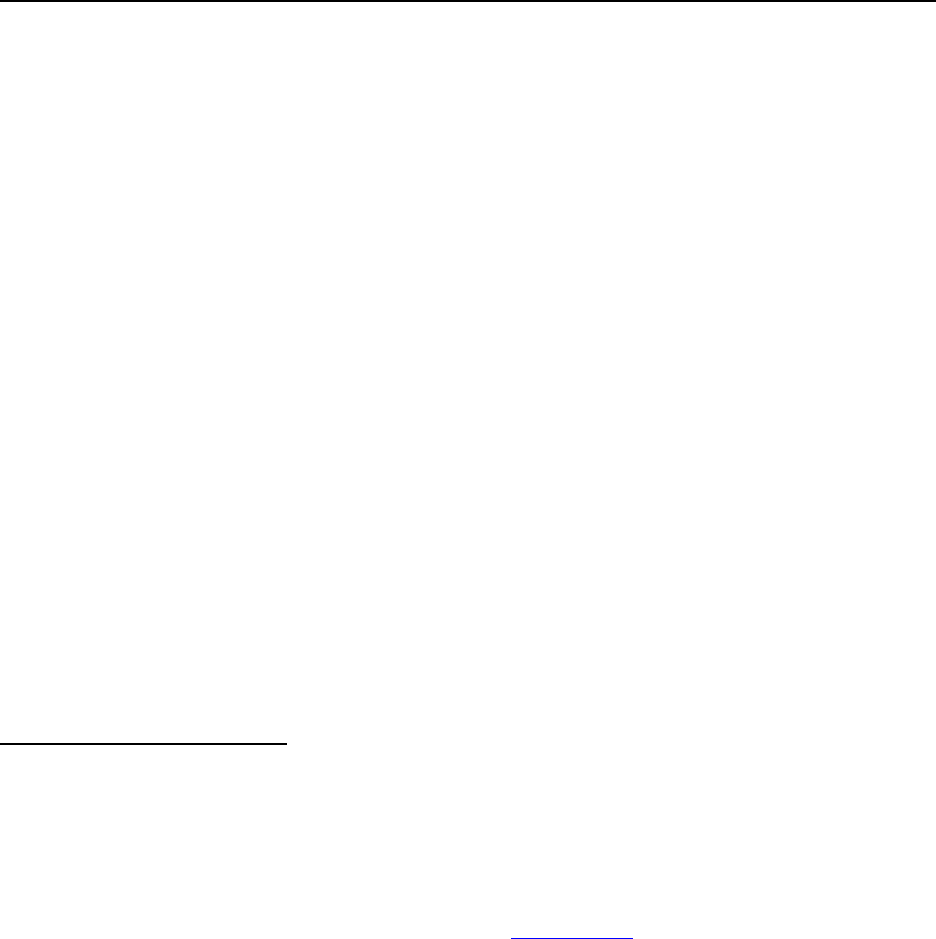
Federal Communications Commission FCC 23-21
2
I. INTRODUCTION
1. Text messaging is among our most popular forms of communication, quickly connecting
people to friends and family, businesses to customers, and governments to constituents. However, with
that popularity comes unique risks. On many devices, consumers can immediately see some or all of
these messages, potentially piquing their interest and enticing them to open the message. Data shows
consumers read nearly all texts, and do so nearly immediately; whereas calls from unknown callers are
often ignored by consumers. While some text messages may present similar problems as unwanted
calls—they invade consumer privacy and are vehicles for consumer fraud and identity theft
1
—they also
present harms beyond robocalls that can exacerbate the problem of such scams. Text message-based
scams can include links to well-designed phishing websites that appear identical to the website of a
legitimate company and can fool a victim into providing personal or financial information. Texted links
can also load unwanted software onto a device, including malware that steals passwords, credentials, or
other personal information. We are therefore, for the first time, requiring all mobile wireless providers to
block certain text messages that are highly likely to be illegal, so that all subscribers have a basic level of
protection.
2
This action will help to ensure that all wireless consumers receive the same protections,
regardless of which mobile wireless provider they use to receive SMS and MMS messages.
2. Mobile wireless providers and others have taken steps to protect consumers from
potentially harmful text messages; nevertheless, unlawful text messaging is trending in the wrong
direction. One source, for example, reports that consumer losses from scam texts were $231 million for
the first three quarters of 2022, up from $86 million for all of 2020. The time is therefore right for us to
take steps to protect consumers.
3. In this Report and Order, we take Commission action to require mobile wireless
providers to block certain robotext messages
3
that are highly likely to be illegal.
4
Building on our call
blocking work, we require mobile wireless providers to block—at the network level—texts purporting to
be from North American Numbering Plan (NANP)
5
numbers on a reasonable Do-Not-Originate (DNO)
6
1
The scope of our decision here is text messaging originating from NANP numbers that use the wireless networks,
e.g., Short Message Service (SMS) and Multimedia Messaging Service (MMS), not over-the-top (OTT) messaging,
such as iMessage and WhatsApp or Rich Communications Services (RCS). See 47 CFR § 64.1600(o) et seq.
2
Commenters share this goal of protecting consumers from illegal text messages. NCLC/EPIC Joint Reply at 1.
3
Texting (SMS and MMS) is not a common-carrier service. Petitions for Declaratory Ruling on Regulatory Status
of Wireless Messaging Service, WT Docket No. 08-7, Declaratory Ruling, 33 FCC Rcd 12075, 12082-12089, paras.
17-32 (2018) (Messaging Declaratory Ruling), recon. pending, Rept. No. 3011 (Feb. 5, 2019). SMS and MMS
wireless messaging services are not the functional equivalent of commercial mobile services (CMRS). Messaging
Declaratory Ruling, 33 FCC Rcd at 12093, para. 37.
4
Targeting and Eliminating Unlawful Text Messages, CG Docket No. 21-402, Notice of Proposed Rulemaking,
FCC 22-72, 2022 WL 4545905 (2022) (NPRM). The list of comments, replies, and ex parte filings is in Appendix
B. We use “robotexts” to include text messages that may be legal or illegal. Some robotext messages are both legal
and wanted, just as some robocalls are legal and wanted. Text messages may be illegal because they violate the
Telephone Consumer Protection Act, such as by being made with an autodialer and being sent without the necessary
consent, because the number displayed is illegally spoofed, which violates the Truth in Caller ID Act, or for other
reasons, particularly if they are fraudulent.
5
The “North American Numbering Plan” is the basic numbering scheme for the telecommunications networks
located in American Samoa, Anguilla, Antigua, Bahamas, Barbados, Bermuda, British Virgin Islands, Canada,
Cayman Islands, Dominica, Dominican Republic, Grenada, Jamaica, Montserrat, Saint Maarten, St. Kitts & Nevis,
St. Lucia, St. Vincent, Turks & Caicos Islands, Trinidad & Tobago, and the United States (including Puerto Rico,
the U.S. Virgin Islands, Guam, the Commonwealth of the Northern Mariana Islands). 47 CFR § 52.5(d).
6
The Commission explained in the 2017 Call Blocking Report and Order that calls from a DNO list, i.e., purporting
to be from a telephone number that the subscriber did not consent to being used for outgoing calls, are very likely
fraudulent and in violation of the Commission’s anti-spoofing rule, and therefore, no reasonable consumer would
(continued….)

Federal Communications Commission FCC 23-21
3
list, which include numbers that purport to be from invalid, unallocated, or unused numbers, and NANP
numbers for which the subscriber to the number has requested that texts purporting to originate from that
number be blocked. At the same time, we take steps to ensure that any erroneous blocking can be quickly
remedied by requiring providers and other entities to maintain a point of contact for texters to report
erroneously blocked texts.
4. We also propose a set of additional protections that could further stem the tide of illegal
text messages. We propose to require terminating providers to block texts from a sender after they are on
notice from the Commission that the sender is sending illegal texts, to extend the National Do-Not-Call
Registry’s protections to text messages, and to ban the practice of marketers purporting to have written
consent for numerous parties to contact a consumer, based on one consent.
5. We anticipate that the rules we adopt here will result in fewer illegal text messages to
consumers.
II. BACKGROUND
6. The Illegal Text Problem. Illegal robotext messages present the same problems as illegal
robocalls—beyond nuisance, they invade a consumer’s privacy and are vehicles for fraud.
7
Commission
data show that consumers are receiving increasing numbers of these types of text messages.
8
The
Commission’s Consumer Advisory Committee (CAC)
9
recently reported that bad actors use a variety of
tactics to commit fraud using text messages.
10
According to CTIA, between 2015 and 2020, while the
total volume of text messages roughly doubled, the number of spam text messages that wireless providers
blocked grew ten times, from an estimated 1.4 billion in 2015 to 14 billion in 2020.
11
The App
Association observes that automated text messages have jumped nationally from 1 billion in July 2021 to
12 billion in June 2022.
12
This commenter also observes that illegal texts impose significant harm to
(Continued from previous page)
wish to receive such a call. See Advanced Methods to Target and Eliminate Unlawful Robocalls, CG Docket No.
17-59, WC Docket No. 17-97, Report and Order and Further Notice of Proposed Rulemaking, 32 FCC Rcd 9706,
9710, para. 10 (2017) (2017 Call Blocking Report and Order). The rules we adopt in this Report and Order define
the group of numbers that shall be on a “reasonable DNO list.” See infra para. 13. We do not require mobile
wireless providers to use the same reasonable DNO list for purposes of our text message blocking rules as they use
for purposes of our call blocking rules. “Reasonable” for these purposes is determined in the context of text
messaging only. However, a list so limited in scope that it leaves out obvious numbers that could be included with
little effort may be deemed unreasonable.
7
For more information on how to avoid or report unwanted calls and texts, see FCC, Consumer Guides, Stop
Unwanted Robocalls and Texts, https://www.fcc.gov/consumers/guides/stop-unwanted-robocalls-and-texts (last
visited Dec. 19, 2022); Federal Trade Commission, Consumer Advice, How to Recognize and Report Spam Text
Messages, https://consumer.ftc.gov/articles/how-recognize-and-report-spam-text-messages (last visited Feb. 2,
2023).
8
Since 2015, the Commission has seen a more than 500% increase in unwanted text complaints, from approximately
3,300 in 2015 to 18,900 in 2022.
9
The CAC is a committee that makes recommendations to the Commission regarding consumer issues within the
jurisdiction of the Commission and facilitates the participation of all consumers in proceedings before the
Commission. FCC, Consumer Advisory Committee, About CAC, https://www.fcc.gov/consumer-advisory-
committee (last visited Jan. 18, 2023).
10
FCC, Consumer Advisory Committee, Report on the State of Text Messaging at 11-12 (2022) (CAC Report).
11
CTIA Comments at 2.
12
The App Association Reply at 2, citing Daisy Gonzalez-Perez, Rise of the robotexts: As new rules curbed spam
calls, texts took off, Cronkite News, (July 21, 2022), https://cronkitenews.azpbs.org/2022/07/21/rise-of-the-
robotexts-as-new-rules-curbed-spam-calls-texts-took-off.
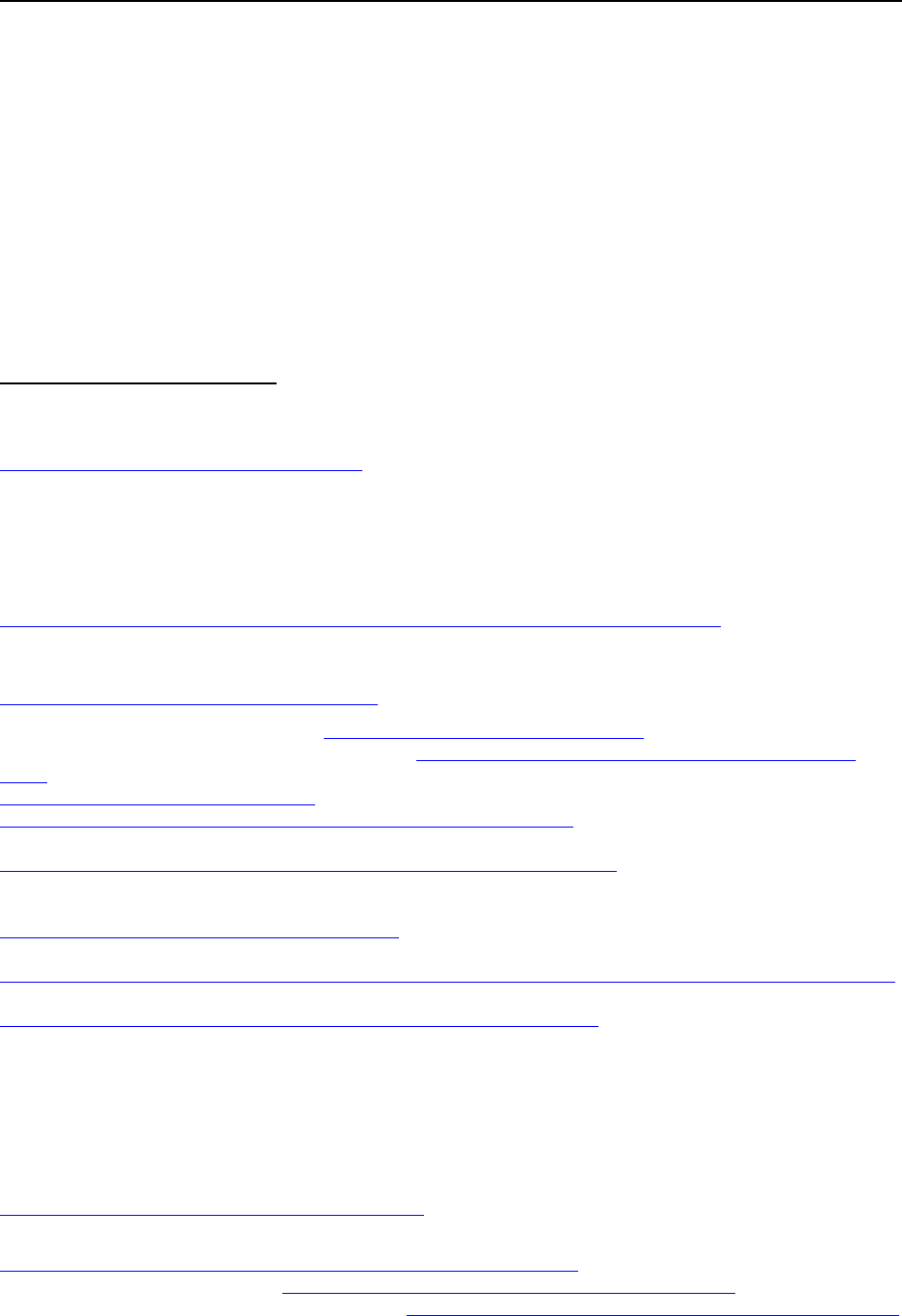
Federal Communications Commission FCC 23-21
4
consumers, particularly for aging Americans struggling with digital literacy.
13
Robokiller reports 47.2
billion spam texts were sent in November 2022 alone.
14
Consumer comments filed in this proceeding also
describe personal experiences with unwanted and scam texts.
15
And consumer groups note that,
according to the Federal Trade Commission (FTC), consumers have reported greater losses, at $231
million, from text message scams in the first three quarters of 2022 than in all of 2020 and 2021
combined.
16
Robokiller projects a 179% increase in the dollars lost from text messages between 2021 and
2022.
17
7. In their schemes, text scammers exploit emergencies such as the COVID-19 pandemic
and natural disasters, along with other important topics that grab consumers’ attention such as student
loans and unemployment insurance.
18
Illegal texts can include links to phishing
19
websites that appear to
be the website of a legitimate company and deceive the victim into providing personal or financial
information.
20
Reports indicate that “smishing” fraud increased by 700% last year.
21
The potential harm
13
The App Association Reply at 2.
14
See Robokiller, United States Spam Text Trends, 2022 United States Robotext Trends,
https://www.robokiller.com/spam-text-insights (last visited Dec. 19, 2022).
15
See, e.g., Omoigui Express Comment (receiving scam text messages from unknown numbers with “Hi” or with a
link, claiming to be a company like Amazon or CVS reaching out with a gift card); Anna K. Comment at 1; Boyd
Express Comment; Hillenburg Comment at 1; Schmidt Comment at 1 (“I am in support of the proposed rule. I am
tired of receiving weird, questionable, and risky texts.”).
16
NCLC/EPIC Joint Reply at 5, citing FTC, Consumer Sentinel Network, Fraud Reports,
https://public.tableau.com/app/profile/federal.trade.commission/viz/FraudReports/FraudFacts (adding the first three
quarters of 2022, totaling $231M; the total for 2021 was $131M, and for 2020 was $86M) (last visited Feb. 2, 2023).
17
NCLC/EPIC Joint Reply at 5, citing Robokiller, The Robokiller Report, 2022 Mid-Year Phone Scam Insights,
https://www.robokiller.com/the-robokiller-report (last visited Feb. 2, 2023).
18
See, e.g., FCC, COVID-19 Text Scams, https://www.fcc.gov/covid-19-text-scams (last visited Sept. 26, 2022);
FCC, Fear Fuels COVID-19 Contact Tracing Scams, https://www.fcc.gov/fear-fuels-covid-19-contact-tracing-
scams (last visited Dec. 21, 2022); FCC, Consumer Alert, Scam Robotexts are a Rising Threat, (Jul. 28, 2022),
https://www.fcc.gov/robotext-scams-rise; FCC, Consumer Guides, Stop Unwanted Robocalls and Texts,
https://www.fcc.gov/consumers/guides/stop-unwanted-robocalls-and-texts (last visited Dec. 19, 2022); Federal
Trade Commission, Consumer Advice, How to Recognize and Report Spam Text Messages,
https://consumer.ftc.gov/articles/how-recognize-and-report-spam-text-messages (last visited Feb. 2, 2023);
Department of Justice, Federal Bureau of Investigations, Cyber Division, Cyber Criminals Create Fraudulent
Cryptocurrency Investment Applications to Defraud US Investors, (Jul. 18, 2022),
https://www.ic3.gov/Media/News/2022/220718.pdf; Internal Revenue Service, News Releases, IRS Reports
Significant Increase in Texting Scams; Warns Taxpayers to Remain Vigilant, (Sept. 28, 2022),
https://www.irs.gov/newsroom/irs-reports-significant-increase-in-texting-scams-warns-taxpayers-to-remain-vigilant;
NBC News, Kevin Collier, Odd Text from a Wrong Number? It’s Probably a Scam, (Jul. 29, 2022),
https://www.nbcnews.com/tech/security/wrong-number-text-scam-rcna39793; WMC Global Comments at 4
(Millions of consumers are receiving links to phishing websites and phishing messages purportedly from their state’s
workforce agency in an extensive and far-reaching campaign targeting U.S. consumers.).
19
WMC Global Comments at 2 (The most significant cyber threats to mobile users revolve around compromising
their personal information, often through brand impersonation or phishing. SMS phishing—commonly referred to
as “smishing”—is an extremely effective method and scammers are learning just how simple and profitable it is.).
“Smishing” is a term that combines SMS and phishing. Scammers use smishing to target consumers with deceptive
text messages sent to their smart devices. FCC, Avoid the Temptation of Smishing Scams,
https://www.fcc.gov/avoid-temptation-smishing-scams (last visited Feb. 8, 2023).
20
See, e.g., Federal Trade Commission, Consumer Advice, How to Recognize and Avoid Phishing Scams,
https://consumer.ftc.gov/articles/how-recognize-and-avoid-phishing-scams (last visited Dec. 21, 2022); AT&T,
Cyber Aware, Text Message Scams, https://about.att.com/pages/cyberaware/ni/blog/text_scams (last visited Dec. 21,
2022); Verizon, Smishing and Spam Text Messages, https://www.verizon.com/about/account-security/smishing-and-
(continued….)
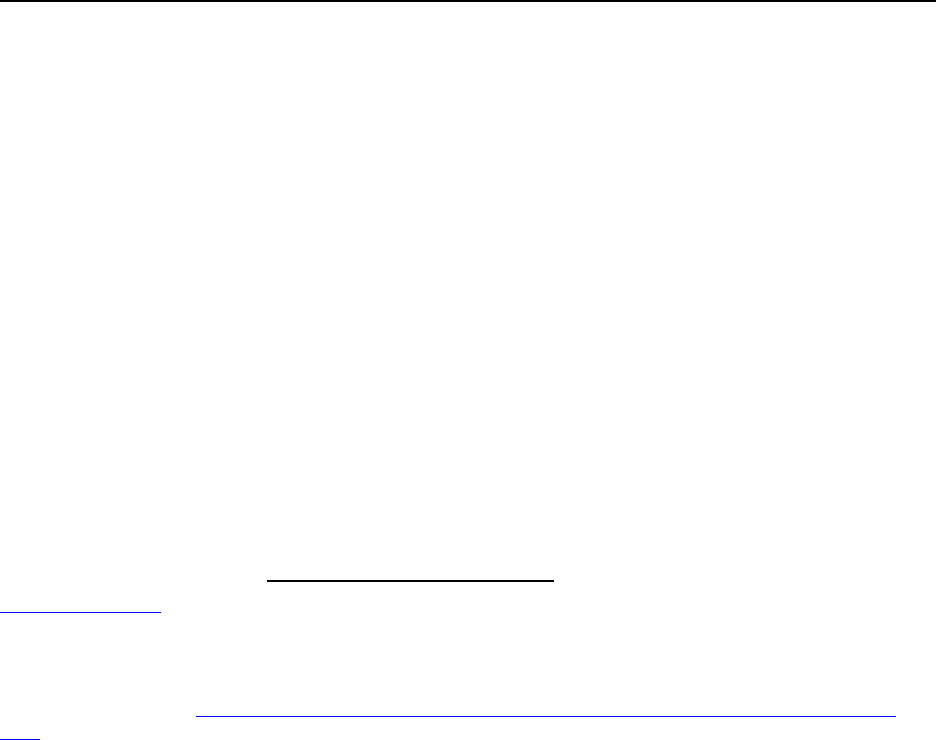
Federal Communications Commission FCC 23-21
5
from illegal texts is more than just economic in nature; fraudulent, misleading texts can also erode trust in
our country’s political and campaign infrastructure.
22
Scam links can load malware onto phones that
steals passwords and other credentials.
23
WMC Global explains that account takeover is one of the most
prevalent methods used to deliver phishing attacks to consumers.
24
In perpetrating these attacks, a
scammer can use a stolen application programming interface (API) key assigned to a legitimate business
to send SMS phishing messages to victims.
25
8. Commission Action on Call Blocking. The Commission has adopted call blocking
26
rules
to address illegal and unwanted robocalls. Since 2017, the Commission has authorized voice service
providers to block certain calls without consumers’ consent.
27
In 2017, the Commission authorized voice
service providers to block, at the network level, calls purporting to be from invalid, unallocated, or unused
NANP numbers, and numbers on a DNO list.
28
In 2019, it clarified that voice service providers may offer
call blocking services on an opt-out basis to new and existing customers, and that such services may block
calls where the blocking is based on reasonable analytics designed to identify unwanted calls.
29
In the
Call Blocking Third Report and Order, the Commission enabled additional voice service provider
blocking, establishing two safe harbors from liability under the Communications Act and the
Commission’s rules for erroneous call blocking.
30
Subsequently, the Commission expanded one of those
safe harbors, allowing terminating voice service providers to block calls at the network level, without
consumer consent, if that blocking is based on reasonable analytics that incorporate caller ID
authentication information designed to identify calls and call patterns that are highly likely to be illegal.
31
(Continued from previous page)
spam-text-messages (last visited Dec. 21, 2022). See WMC Global Comments at 2 (During the COVID-19
pandemic, scammers began leveraging phishing kits, i.e., back-end source code packages used to launch phishing
attacks, to defraud both U.S. citizens and government agencies out of unemployment payments.)
21
Infobip Reply at 2-3, citing Weston Sabina. “Smishing attacks increased 700% in first six months of 2021,”
ITPro, (Sept. 14, 2021), https://www.itpro.co.uk/security/scams/360873/smishing-attacks-increase-700-percent-
2021.
22
Campaign Verify Comments at 3.
23
Public Knowledge Reply at 2.
24
WMC Global Comments at 3.
25
Id. The API keys are typically stolen through data breaches, business email compromise, and insider threats. Id.
26
Call blocking is “stopping calls outright so that they do not ring a phone, routing the calls directly to voicemail
without ringing the phone, or some other treatment, such as interactive voice response session or voice call
screening.” Advanced Methods to Target and Eliminate Unlawful Robocalls, CG Docket No. 17-59, WC Docket
No. 17-97, Declaratory Ruling and Third Further Notice of Proposed Rulemaking, 34 FCC Rcd 4876, 4884 n.47
(2019) (2019 Call Blocking Declaratory Ruling).
27
2017 Call Blocking Report and Order, 32 FCC Rcd at 9710-21, paras. 10-40; 2019 Call Blocking Declaratory
Ruling, 34 FCC Rcd at 4886-88, paras. 33-34; 47 CFR § 64.1200(k)(1), (2).
28
2017 Call Blocking Report and Order, 32 FCC Rcd at 9710-21, paras. 10-40. Phone numbers that are only used
by their subscribers to receive inbound calls can be placed on a DNO list. Id. at 9710, para. 10.
29
2019 Call Blocking Declaratory Ruling, 34 FCC Rcd at 4886-88, paras. 33-34.
30
Advanced Methods to Target and Eliminate Unlawful Robocalls, CG Docket No. 17-59, Third Report and Order,
Order on Reconsideration, and Fourth Further Notice of Proposed Rulemaking, 35 FCC Rcd 7614, 7623-31, paras.
20-45 (2020) (Call Blocking Third Report and Order). The first of these safe harbors protects terminating voice
service providers that block calls based on reasonable analytics, including caller ID authentication information,
designed to identify unwanted calls so long as the consumer is given the opportunity to opt out. Id. at 7625-27,
paras. 25-34. The second safe harbor protects any voice service provider that blocks calls from a bad-actor upstream
voice service provider that fails to effectively mitigate illegal traffic when notified of such traffic by the
Commission. Id. at 7627-31, paras. 35-45.

Federal Communications Commission FCC 23-21
6
The Call Blocking Fourth Report and Order also required voice service providers to take steps to stop
illegal traffic on their networks and assist the Commission, law enforcement, and the industry traceback
consortium
32
in tracking down callers that make such calls.
33
9. The Commission expanded these rules further last year in the Gateway Provider Order,
making its previously permissive blocking policy mandatory in certain circumstances.
34
That Order,
among other things, required gateway providers to block calls based on any reasonable DNO list, block
illegal traffic upon Commission notification, respond to traceback requests within 24 hours, and adopted a
know-your-upstream-provider policy for gateway providers.
35
10. The TCPA and Do-Not-Call. In addition to the rules described above, the Commission
has other protections for consumers, specifically in the Telephone Consumer Protection Act (TCPA)
36
and
the Do Not Call (DNC) rules. For example, certain calls and texts sent using an automatic telephone
dialing system and calls made using a prerecorded or artificial voice to mobile telephone numbers require
consumer consent.
37
In 2015, the Commission also clarified that Internet-to-phone text messages, which
are sent via the Internet to a mobile wireless provider and then routed to a consumer’s phone over the
provider’s wireless network, are also covered by the TCPA’s protections.
38
11. The Commission’s DNC rules also protect consumers from unwanted telephone
solicitations or telemarketing calls to wireless and wireline phones when the consumer has added their
(Continued from previous page)
31
Advanced Methods to Target and Eliminate Unlawful Robocalls, CG Docket No. 17-59, Fourth Report and Order,
35 FCC Rcd 15221, 15236, at para. 42 (2020) (Call Blocking Fourth Report and Order). The Commission made
clear that this blocking must be managed “with human oversight and network monitoring sufficient to ensure that
the blocking works as intended,” which “must include a process that reasonably determines that the particular call
pattern is highly likely to be illegal prior to blocking calls that are part of that pattern.” Id. at 15234-5, 15236, paras.
39, 42-43.
32
The current industry traceback consortium is the Industry Traceback Group (ITG), which is a group of voice
service providers, wireline, wireless, and VoIP, that are tracing and identifying the source of illegal robocalls. See
ITG, https://tracebacks.org (last visited Dec. 21, 2022).
33
Call Blocking Fourth Report and Order, 35 FCC Rcd at 15226-27, para 13. See 47 CFR § 64.1200(n)(2). In our
Further Notice of Proposed Rulemaking we are seeking comment on extending to text messages the existing
requirement that voice service providers take steps to effectively mitigate illegal traffic when a voice service
provider receives actual written notice of such traffic from the Commission.
34
Advanced Methods to Target and Eliminate Illegal Robocalls, CG Docket No. 17-59, WC Docket No. 17-97,
Sixth Report and Order in CG Docket No. 19-59, Fifth Report and Order in WC Docket No. 17-97, Order, Seventh
Further Notice of Proposed Rulemaking in CG Docket No. 17-59 & Fifth Further Notice of Proposed Rulemaking in
WC Docket No. 17-97, 2022 WL 1631842 at paras. 74-86, FCC 22-31 (rel. May 20, 2022) (Gateway Provider
Report and Order).
35
See 47 CFR §§ 64.1200 (k)(5), (k)(6), (n)(1), (f)(19), (n)(4), (n)(5), (n)(6), (o), (p).
36
Rules and Regulations Implementing the Telephone Consumer Protection Act of 1991, CG Docket No. 02-278,
Report and Order, 18 FCC Rcd 14014, 14115, para. 165 (2003) (2003 TCPA Order). The DNC rules apply to calls
to wireline and wireless phones. Id. at 14115-16, paras. 165-66.
37
47 U.S.C. § 227(b)(1)(A). In the Facebook v. Duguid decision, the Supreme Court clarified that “a necessary
feature of an autodialer under § 227(a)(1)(A) is the capacity to use a random or sequential number generator to
either store or produce phone numbers to be called.” Facebook, Inc. v. Duguid, 141 S.Ct. 1163, 1171 (2021)
(Facebook). The Commission made clear in 2003 that “calls” include text messages to wireless numbers including,
for example, SMS calls, provided the call is made to a telephone number assigned to such service. 2003 TCPA
Order, 18 FCC Rcd at 14115, para. 165.
38
Rules and Regulations Implementing the Telephone Consumer Protection Act of 1991, CG Docket No. 02-278, 30
FCC Rcd 7961, 8019-20, para. 113-15 (2015) (2015 TCPA Declaratory Ruling and Order).
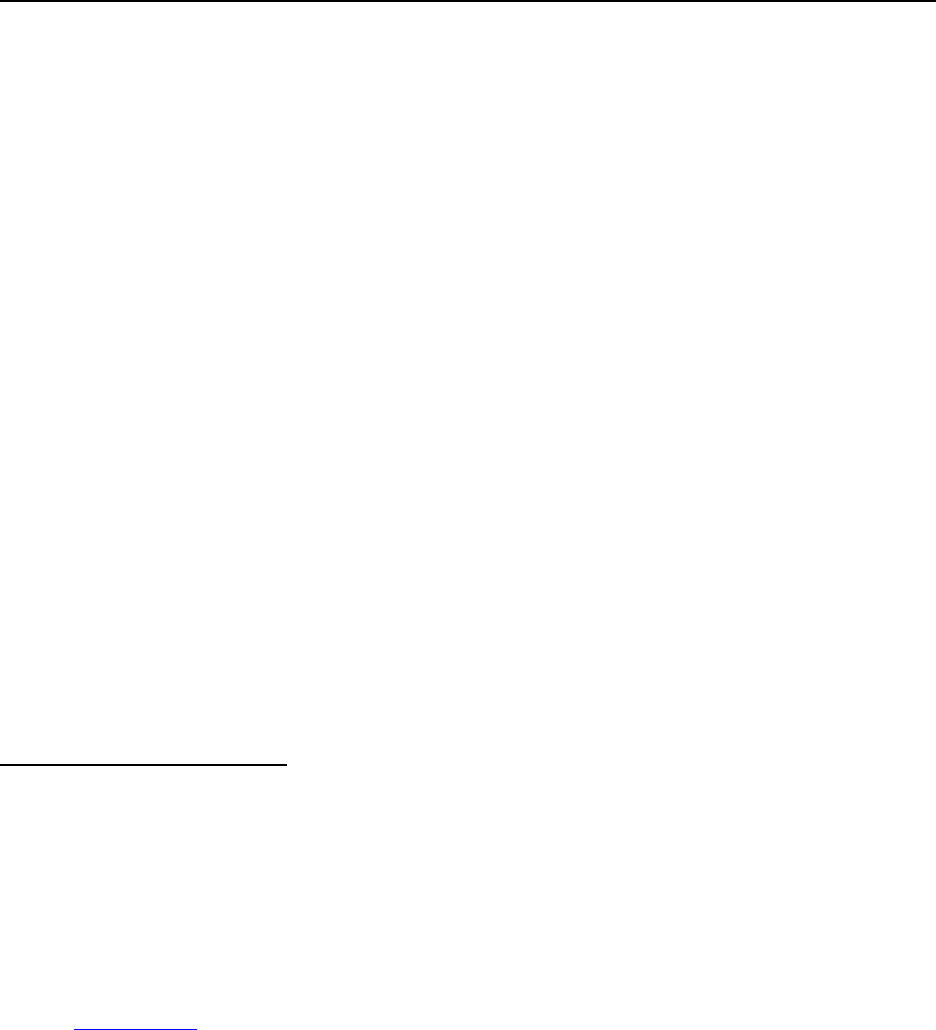
Federal Communications Commission FCC 23-21
7
wireline or wireless number to the National DNC Registry.
39
DNC rules state that telemarketers, subject
to certain exceptions,
40
are prohibited from initiating any telephone solicitation to “[a] residential
telephone subscriber who has registered his or her telephone number on the national do-not-call registry
of persons who do not wish to receive telephone solicitations”;
41
this rule also applies to wireless
telephone numbers.
42
Yet, while the Commission included both wireless and wireline numbers in the
DNC protections, it has not explicitly included text messages in the DNC rules.
43
12. Text Blocking Notice of Proposed Rulemaking. In the NPRM, we proposed to protect
consumers from the increasing numbers of illegal text messages by extending to text messages some of
the consumer protections that have been successful against illegal voice calls.
44
We proposed to adopt a
rule requiring mandatory blocking of texts that purport to be from numbers on a reasonable DNO list. We
also sought comment on whether to adopt a requirement that mobile service providers maintain a single
point of contact for senders to report erroneously blocked texts. We also sought comment on the extent to
which spoofing
45
is a problem with regard to text messaging and on applying caller ID authentication
standards to text messaging.
46
III. REPORT AND ORDER
13. In this Report and Order, we for the first time require mobile wireless providers
47
to take
action to protect consumers from certain text messages that are highly likely to be illegal. We require
these mobile wireless providers to block texts that purport to be from NANP numbers on a reasonable
DNO list, which include numbers that purport to be from invalid, unallocated, or unused numbers, and
NANP numbers for which the subscriber to the number has requested that texts purporting to originate
from that number be blocked; these are texts that no reasonable consumer would wish to receive because
they are highly likely to be illegal. At the same time, and also consistent with our work on call blocking,
we take steps to mitigate the risk of erroneous blocking by requiring mobile wireless providers to ensure
that senders have access to points of contact to report erroneously blocked texts.
39
2003 TCPA Order, 18 FCC Rcd at 14115-16, paras. 165-66.
40
Id. at 14042-46, paras. 42-47; 47 CFR § 64.1200(f)(15)(i)-(iii) (exempting certain types of calls from the
definition of “telephone solicitation”). Telemarketers may claim a safe harbor by demonstrating that any violation
was the result of an error. 2003 TCPA Order, 18 FCC Rcd at 14040, para. 38; 47 CFR § 64.1200(c)(2)(i)-(iii).
41
47 CFR § 64.1200(c)(2). See also 2003 TCPA Order, 18 FCC Rcd at 14034, para. 28.
42
47 CFR § 64.1200(e).
43
The Commission has previously concluded that SMS and MMS text messaging is an information service and not a
common-carrier service. See Messaging Declaratory Ruling, 33 FCC Rcd at 12082-12089, paras. 17-32, recon.
pending, Rept. No. 3011 (Feb. 5, 2019).
44
NPRM at para. 18.
45
Spoofing is falsifying the caller ID information that appears on the called party’s phone with the intent to defraud,
cause harm, or wrongfully obtain something of value. 47 U.S.C. § 227(e).
46
We are not adopting a caller ID authentication requirement here. Commenters generally opposed this and
explained that illegal and unwanted messages rarely come from spoofed numbers and a caller ID authentication
solution, even if feasible, would be unlikely to reduce unwanted and illegal text messages. See, e.g., CTIA
Comments at 4-5, 11; EZ Texting Comments at 5-6; M
3
AAWG Comments at 10; NetNumber Comments at 7 &
Reply at 2-3; Sinch Comments at 6-7; Telesign Comments at 2-3; T-Mobile Comments at 9-10; Verizon Comments
at 7 & Reply at 4-5; WMC Global Comments at 2; AT&T Reply at 9-10; Cloud Communications Reply at 1-2;
RWA Reply at 3-5; Vibes Reply at 2-4.
47
The rules we adopt in this Order are limited to SMS and MMS text messaging; therefore, for purposes of this
Order, the service providers offering SMS and MMS text messaging are “mobile wireless providers.”

Federal Communications Commission FCC 23-21
8
14. We recognize at the outset the efforts providers and others have made in protecting
consumers from illegal, or otherwise harmful, texts.
48
As commenters have discussed, providers and
others have adopted measures to protect consumers from such text messages, such as upfront vetting for
bulk message senders, the CTIA Messaging Principles and Best Practices, and providers’ own
requirements and guidance.
49
We believe that our actions and proposals today complement those efforts
while ensuring customers of all providers get a baseline of protection. While we believe industry efforts
to date are important to protect consumers, the increases in consumer complaints and consumer harm
from robotext messages convinces us to take additional measures to protect consumers. As some
commenters note, robotexts will likely increase as scammers migrate from calling to texting.
50
We agree
with industry commenters that say fostering information and collaboration is an important part of the
effort. But, in light of increased scams robbing consumers of their money and time, we disagree that we
should wait to take targeted action.
15. We choose to act now and, for the first time, require text blocking by all mobile wireless
providers so that all subscribers have the same basic level of protection.
51
As the number of illegal text
messages grows, so does the risk to consumers. Our action ensures protection for all wireless consumers,
regardless of which mobile wireless provider they use to receive messages. We therefore disagree with
CTIA, that we could undermine current efforts by mobile wireless providers to protect consumers from
scam texts because there is a risk that some providers will “divert resources away from innovative
solutions that can more accurately and effectively target spam text messages.”
52
Given the limited nature
of the rules we adopt and the unchallenged record data that consumers are increasingly harmed by text
scams, we are not persuaded that mobile wireless providers would divert significant resources from other
anti-spam initiatives and that they are not needed at this time. Nor does anything in the rules we adopt
here prevent mobile wireless providers from engaging in existing or future anti-spam efforts or require
them to block messages from short codes or OTT applications.
53
A. Mandatory Blocking of Texts that are Highly Likely to be Illegal
16. We adopt our proposal to require mobile wireless providers to block text messages at the
network level (i.e., without requiring consumer opt in or opt out). The rule we adopt requires that they
block texts purporting to be from numbers on a reasonable DNO list.
54
As the Commission determined
48
See, e.g. CTIA Comments at 8-9; INCOMPAS Comments at 6; T-Mobile Comments at 6; VON Comments at 3;
AT&T Reply at 5; NCLC/EPIC Joint Reply at 5.
49
See, e.g., CTIA Comments at 9; Sinch Comments at 3; T-Mobile Comments at 4-7; Verizon Comments at 2;
AT&T Reply at 3-6.
50
NORC Reply at 1.
51
Commenters share this goal of protecting consumers from illegal text messages. See, e.g., AB Handshake
Comments at 1; Campaign Verify Comments at 3; CCA Comments at 4; CTIA Comments at 2-3; T-Mobile
Comments at 10-11; Verizon Comments at 2; VON Comments at 2; AT&T Reply at 5-6; NCLC/EPIC Joint Reply
at 1; Letter from Scott Bergmann, Senior Vice President, Regulatory Affairs, CTIA, to Marlene H. Dortch,
Secretary, Federal Communications Commission (Mar. 12, 2023) at 1 (CTIA 3/12/23 ex parte); Letter from
Christopher L. Shipley, INCOMPAS; David Casem, Telnyx; Paula Boyd, Microsoft; Helen Marie Berg, Google,
Michael Pryor, Cloud Communications Alliance; Greg Rogers, Bandwidth to Marlene H. Dortch, Secretary, Federal
Communications Commission (Mar. 10, 2023) at 1 (INCOMPAS Joint ex parte).
52
CTIA Comments at 13-14.
53
See id. (expressing concerns about blocking of legitimate text messages).
54
NPRM at para. 19. The text messaging services discussed in this proceeding are information services that route
messages through the wireless mobile provider networks. Messaging Declaratory Ruling, 33 FCC Rcd at 12078,
para. 8. In the NPRM, we observed that the definition of text message includes SMS messages but “does not include
. . . a message sent over an IP-enabled messaging service to another user of the same messaging service.” NPRM at
para. 23. Commenters generally agree that OTT messaging is not covered by our current definition of text
(continued….)

Federal Communications Commission FCC 23-21
9
with calls, we find that no reasonable consumer would wish to receive text messages that spoof a number
that is not in operation or, worse, purports to be from a well-known, trusted organization that does not
send text messages and thus is highly likely to be a scam. Our requirement to block texts that purport to
be from numbers on a reasonable DNO
list does not include text messages from short codes.
17. We find it appropriate to adopt a mandatory rule here for blocking texts that purport to be
from numbers on a reasonable DNO
list for several reasons: (i) the texts from such numbers are likely to
be illegal; (ii) illegal text messages can have links to malware, a problem that voice calls do not have; (iii)
the volume of illegal text messages is increasing, particularly since we adopted measures to block such
voice calls; (iv) consumers expect to receive texts from unfamiliar numbers, e.g., as appointment
reminders and for double factor authentication, and therefore are more likely to open such messages even
when they do not recognize the sending party; and (v) our approach provides benefits to consumers while
imposing minimal burden on mobile wireless providers.
18. Our decision to require blocking here, rather than simply rely on industry’s voluntary
efforts to block, as we have done in the past with certain call blocking, is in part the result of the
heightened risk of text messages as both annoyance and vehicles for fraud. The ubiquity and familiarity
of text messaging and the alerts that accompany texts contribute to consumers’ receptiveness to text
messages.
55
Data indicates that consumers read nearly all texts they receive, and do so nearly
immediately.
56
Indeed, industry data suggests that consumers open a far larger percentage of text
messages than email, and open such messages much more quickly.
57
This stands in contrast to calls
where, as we have said repeatedly, consumers report no longer trusting calls from an unfamiliar number
and refusing to answer them. Further, we believe this requirement does not impede text messaging by
legitimate businesses because our rule is narrowly focused on a set of messages that are highly likely to
be illegal: they purport to be from numbers from which no consumer should receive a text message.
58
19. As the Senate Committee on Commerce, Science, and Transportation (Senate Commerce
Committee) observed: “In recent years, spoofing scams in the United States have used text messaging
services and other alternative voice communications services.”
59
And Senator Schatz explains, “[t]exts
(Continued from previous page)
messaging. See, e.g., ABA Joint Commenters at 8; CRC Comments at 3; INCOMPAS Comments at 7 & Reply at 7.
The App Association contends, and we agree, that imposing such new rules on OTT messaging services could
disproportionately burden smaller carriers and OTT providers and suppress the development of new innovative
solutions. App Association Reply at 5. Therefore, for purposes of this rule, we use the same definition of text
message that the Commission has used for purposes of the Truth-in-Caller ID Act. See 47 CFR § 64.1600(o) et seq.
That is, a “text message” is a “message consisting of text, images, sounds or other information that is transmitted to
or from a device that is identified as the receiving or transmitting device by means of a 10-digit telephone number or
N11 service code.” Id. It includes SMS and MMS messages, but does not include voice communication or
messages sent over an IP-enabled messaging service to another user of the same messaging service. See id.
55
Messaging Declaratory Ruling, 33 FCC Rcd at 12079-80, para 12 & n.41.
56
Id.
57
Id.
58
See ABA Joint Commenters at 3; Weave Reply at 2-3. We agree with commenters that this step will help combat
the rise of text message scams that rely on spoofing. See, e.g., Ad Hoc Comments at 3; ABA Joint Commenters at
5; Public Knowledge Reply at 3-4; Neustar Comments at 1; Schatz Letter at 1; State AGs Reply at 3-4. For
example, iconectiv observes that SMS fraudsters often use unallocated numbers from foreign jurisdictions.
iconectiv Comments at 1-2. For this reason, some mobile wireless providers already incorporate this DNO
information into their blocking algorithms. iconectiv Comments at 2.
59
See Spoofing Prevention Act of 2017, Report of the S. Comm. On Commerce, Sci. & Transp. On S. 134, S. Rep
No. 115-91, at 2 (2017) (Spoofing Prevention Act of 2017), available at https://www.congress.gov/congressional-
report/115th-congress/senate-report/91/1 (last visited Feb. 22, 2023) (explaining proposed changes to 47 U.S.C. §
227(e)).

Federal Communications Commission FCC 23-21
10
from these numbers are surely illegal or unwanted, and it makes sense that mobile wireless carriers should
block them.”
60
Fifty-one State Attorneys General, a frontline of law enforcement, observe that they are
receiving an increasing number of consumer complaints concerning illegal and/or unwanted text
messages.
61
They contend:
As with voice calls purporting to be from [a reasonable DNO list], text messages from such
numbers are also highly likely to be illegal. Simply stated, no wireless subscriber should be
receiving any voice call or text message from these numbers. For example, a person receiving a
text message from a number purporting to have an area code “000” would be receiving a text
message from an invalid phone number. In this circumstance, a scammer has most likely spoofed
an invalid number when sending the text message, and this type of fraudulent and misleading
representation of information by the purported sender of the text message should not be
permitted.
62
We agree with the State AGs that this is a commonsense approach to blocking because it attacks those
texts that are most likely to be fraudulent.
63
20. Even if the number of texts using such spoofing is small, the costs to individual
consumers that receive them can be high. For example, AB Handshake observes that the daily damage
caused by “smishing” cases to the consumers of a single financial institution can reach $85,000.
64
AB Handshake agrees that blocking invalid numbers can help to filter out some illegal messages.
65
Further, the Senate Commerce Committee mentioned in its report accompanying the Spoofing Prevention
Act of 2017 that phone fraud cost Americans $8.6 billion in 2014.
66
We further agree with Public
Knowledge, which notes that current voluntary text blocking means that mandatory blocking may not
have considerable additional effect for some providers’ customers, but it also means that implementation
should be relatively easy, inexpensive, and unlikely to result in excessive blocking.
67
Indeed, commenters
do not argue otherwise.
68
21. We also find that the rule we adopt today will impose a minimal burden on mobile
wireless providers while providing a necessary baseline level of protection to consumers. As many
industry commenters note, many mobile wireless providers already employ measures to block text
messages.
69
These efforts include DNO-based blocking.
70
For providers that already employ such
60
Schatz Letter at 1.
61
State AGs Reply at 2.
62
Id. at 3.
63
State AGs Reply at 3.
64
AB Handshake Comments at 1.
65
Id. at 3.
66
See Spoofing Prevention Act of 2017 at 2.
67
Public Knowledge Reply at 3.
68
See, e.g., CTIA Comments at 17 (mobile messaging networks already incorporate a substantial degree of
authentication, and the wireless industry is working to improve its authentication capabilities today); T-Mobile
Comments at 7 (T-Mobile only allows active, provisioned telephone numbers to originate text messages on the T-
Mobile network); Vibes Reply at 3 (the industry already includes substantial registration and verification processes
that are not present in the voice world).
69
See, e.g., AAPC Comments at 2; Blooston Comments at 3; CCA Comments at 3; CTIA Comments at 6-11 &
Reply at 3-7; EZ Texting Comments at 6; M
3
AAWG Comments at 10; iconectiv Comments at 2; Pinger Comments
at 2; Sinch Comments at 7-8; Somos Comments at 7-8; Telesign Comments at 3; T-Mobile Comments at 3, 7-8;
Verizon Comments at 2; VON Comments at 3; AT&T Reply at 5; Infobip Reply at 2. Such efforts include a
common means for consumers to report unwanted text messages through “7726 (SPAM).” See CTIA Comments at
(continued….)

Federal Communications Commission FCC 23-21
11
measures, our rule imposes no additional burden. For the limited number of providers that do not
currently employ such measures, our rule will provide consumers with a baseline level of protection
against illegal and fraudulent text messages. We believe the rule we adopt today strikes the best balance
between protecting consumers from illegal text messages while imposing minimal burden on mobile
wireless providers.
22. We disagree with commenters who argue that consumers will become accustomed to
seeing their text messages periodically blocked and will seek other messaging solutions.
71
Because this
blocking will occur at the network level, consumer recipients will not be aware of each blocked text, but
will be protected before illegal robotexts ever reach their phones. We do not believe that any reasonable
consumer would seek other messaging solutions because illegal texts, particularly scam texts, did not
reach their phones. And we agree with Public Knowledge that commenters opposing this step have
provided no evidence that texts are not delivered using such numbers or that that their current voluntary
blocking already stops them.
72
23. We disagree with CTIA’s argument that “given that the Commission’s call blocking rules
for voice services—a service generally governed by Title II common carrier obligations—are largely
permissive, it would be highly incongruous for the Commission to adopt mandatory blocking rules for
text messaging, a Title I information service.”
73
We recognize that, historically, our rules for voice calls
generally permit and do not mandate blocking.
74
However, we have recently adopted mandatory blocking
requirements for gateway providers, some of which are not Title II services.
75
Furthermore, the unique
concerns of text messaging as vehicles for malware and as a more trusted form of communications than
(Continued from previous page)
8-9. Wireless providers use information from this reporting mechanism to “track and aggregate the information that
consumers report . . . and further calibrate their spam filters and blocking tools.” Id.
70
See, e.g., CTIA Comments at 11 (explaining that existing countermeasures prevent messages from invalid,
unallocated, unused, or DNO telephone numbers from being transmitted to consumer’s wireless devices); T-Mobile
Comments at 7-8 (messages on T-Mobile’s network are either consumer messages, directly originated on a device
with a valid number and sent to another device with a valid number, or they are non-consumer messages that must
be part of a pre-approved campaign with validated origination information).
71
CCA Comments at 8.
72
Public Knowledge Reply at 3.
73
CTIA Comments at 15 n.44.
74
See 47 CFR § 64.1200(k)(1), (2).
75
47 CFR § 64.1200(o) provides:
A provider that serves as a gateway provider for particular calls must, with respect to those calls, block any
calls purporting to originate from a number on a reasonable do-not-originate list. A list so limited in scope
that it leaves out obvious numbers that could be included with little effort may be deemed unreasonable.
The do-not-originate list may include only:
(i) Numbers for which the subscriber to which the number is assigned has requested that calls purporting to
originate from that number be blocked because the number is used for inbound calls only;
(ii) North American Numbering Plan numbers that are not valid;
(iii) Valid North American Numbering Plan Numbers that are not allocated to a provider by the North
American Numbering Plan Administrator; and
(iv) Valid North American Numbering Plan numbers that are allocated to a provider by the North American
Numbering Plan Administrator, but are unused, so long as the provider blocking the calls is the allocatee of
the number and confirms that the number is unused or has obtained verification from the allocatee that the
number is unused at the time of blocking.

Federal Communications Commission FCC 23-21
12
calling, convince us that we should act quickly to mandate specific blocking of a narrow set of texts that
are highly likely to be illegal.
24. We also disagree with AT&T’s contention that our estimation of costs to consumers due
to illegal texts, at $6.3 billion, gives us the ability to justify any regulation as long as it costs the industry
less than $6.3 billion to implement.
76
Although AT&T disagrees with our estimate of the cost to
consumers, it has not provided an estimate of industry’s cost to block texts that purport to be from
numbers on a reasonable DNO list—a cost that we believe will be minimal due to the industry existing
voluntary actions. These actions are reasonable responses to the harm and specifically focused to mitigate
the ongoing damages consumers face from illegal, fraudulent text messages that mobile wireless
providers transmit today.
25. Our requirement for mandatory blocking of texts that purport to be from numbers on a
reasonable DNO list is straightforward and does not define “highly likely to be illegal” or ask mobile
wireless providers to determine whether particular messages are “highly likely to be illegal.” We
therefore disagree with CTIA that regulation of criteria used by mobile wireless providers to determine
which text messages are “highly likely to be illegal” would be inconsistent with the classification of
wireless messaging as Title I information service.
77
26. We recognize that the Commission earlier concluded that, in the absence of Title II
regulation, mobile wireless providers have employed effective methods to protect consumers from
unwanted messages and thereby made wireless messaging a trusted and reliable form of communication
for millions of Americans.
78
The rule we adopt here does not affect providers’ ability to continue to
employ such methods to protect consumers. Under our rules, mobile wireless providers are now required
to block texts that purport to be from numbers on a reasonable DNO list.
79
Mobile wireless providers
remain free to continue the measures they are currently using to protect consumers from unwanted and
illegal text messages.
80
B. Point of Contact
27. We require each mobile wireless provider to establish a point of contact for text senders,
or have providers require their aggregator partners or blocking contractors to establish such a point of
contact.
81
This point of contact will enable texters to contact mobile wireless providers, with the goal of
swiftly receiving and resolving complaints of unwarranted blocking of text messages.
82
Several
76
AT&T Reply at 14.
77
CTIA Comments at 15.
78
Messaging Declaratory Ruling, 33 FCC Rcd at 12095, para. 43.
79
CCA asks whether a subscriber request for blocking a number as part of a reasonable DNO list would apply to
blocking network-wide. Letter from Angela Simpson, Senior Vice President and General Counsel, Competitive
Carriers Association to Marlene H. Dortch, Secretary, Federal Communications Commission (Mar. 9, 2023) at 1
(CCA ex parte). CCA is not clear as to their concern. As a general matter, however a number on a reasonable DNO
list would be blocked by any provider in the text path.
80
We recognize that CTIA and the industry has established guidelines to encourage the innovative use of
messaging, while also guarding against unwanted and unlawful text messages. For example, CTIA’s Messaging
Principles and Best Practices promote the establishment of expectations that non-consumer message senders will
obtain consumer consent prior to messaging consumers, and that they will honor consumer opt-outs, among other
practices. CTIA Comments at 8. The rules we adopt here are not inconsistent with the measures that the industry
has taken already.
81
See NPRM at para. 27 (seeking comment on requiring such single point of contact for resolving issues of
erroneous blocking).
82
We recognize that there may be instances where a sender cannot readily identify the mobile wireless provider that
blocked the text message. In such cases, we encourage the sender to work with its mobile wireless provider to
(continued….)

Federal Communications Commission FCC 23-21
13
commenters observe that it would be helpful to have a point of contact, as already exists for blocked voice
calls, in order to address and mitigate any text blocking issues.
28. In order to ensure the effectiveness of this requirement as a means of curing blocking of
legitimate text messages, we adopt certain safeguards to protect providers from unscrupulous texters.
First, we require that providers need only accept blocking complaints from senders that can provide
documented, objective evidence of blocking.
83
We agree with CTIA that, without this restriction,
unscrupulous texters could flood the points of contact with bogus claims of erroneous blocking and thus
divert focus from legitimate blocking concerns.
29. We also agree with CTIA that entities other than mobile wireless providers, such as
aggregators or contractors, could be responsible for blocking.
84
We therefore give providers flexibility to
either establish their own point of contact
85
or to require their aggregator partners and blocking
contractors to establish such a point of contact, which we would expect could resolve the blocking more
quickly than the provider. In any case, we emphasize that any legitimate sender of text messages with
documented, objective evidence of blocking should be able to easily contact the entity responsible for that
blocking to resolve the dispute and expect providers, aggregators and contractors to respond
appropriately.
30. Just as for blocked voice calls, we find that an easy means for texters to resolve
potentially erroneous blocking will help ensure that consumers are not deprived of texts they would want
to receive. While we anticipate minimal risk from our rule above, requiring mandatory blocking of texts
from certain types of numbers,
86
there may be instances of erroneous blocking due to providers’ voluntary
blocking.
87
For example, a provider or its blocking partners could choose to block texts of a sender who
fails to comply with its terms of usage or who exhibits suspicious texting behavior. For these and other
reasons where otherwise legal texts may be blocked, it is important for senders to easily resolve their
texting problems with providers.
31. We decline to set time limits on resolving blocking error complaints.
88
The ABA Joint
Commenters contend that, when a sender makes a credible claim of erroneous blocking and the blocker
determines that the text message should not have been blocked, the blocker should be required to cease
(Continued from previous page)
identify the appropriate contact. See Call Blocking Fourth Report and Order, 35 FCC Rcd at 15246 & n.175
(discussing requiring a point of contact for blocked calls).
83
CTIA 3/7/23 ex parte at 4.
84
Id.
85
Such point of contact may be the same point of contact for voice call blocking error complaints.
86
Sinch Comments at 10 (the risk of erroneous blocking is minimal when only text messages deemed “highly
likely” to be illegal are subject to blocking); Public Knowledge Reply at 4.
87
See, e.g., ABA Joint Commenters at 7; CCA Comments at 10-11; Coalition for Open Messaging Comments at 3
(contending that wireless carriers impose barriers that prevent organizations’ ability to use person-to-person (P2P)
messaging because such messaging is classified by the providers as business-to-consumer (A2P, thereby requiring
the sender to register with carrier programs); INCOMPAS Comments at 3 & Reply at 4 (observing that some of the
wireless carriers’ methods, like The Campaign Registry, carry significant operational burdens, privacy concerns, and
high costs, but with little demonstrable consumer value being added); NORC Comments at 6 & Reply at 5
(contending that discretion in blocking legal texts should not be unbounded and that carriers use non-transparent
“trust scores” to block); Pinger Comments at 2 (stating that overly broad carrier classifications can lead to situations
where analytics programs indiscriminately block essential, urgent, and wanted messages and such indiscriminate
blocking jeopardizes individuals’ health and safety); State Voices Comments at 12 (explaining that, if the text
message sender exceeds a threshold of 0.1% of texts reported by consumers as spam, service providers may suspend
services for that texter); Cloud Communications Reply at 2-5.
88
See NPRM at para. 27.
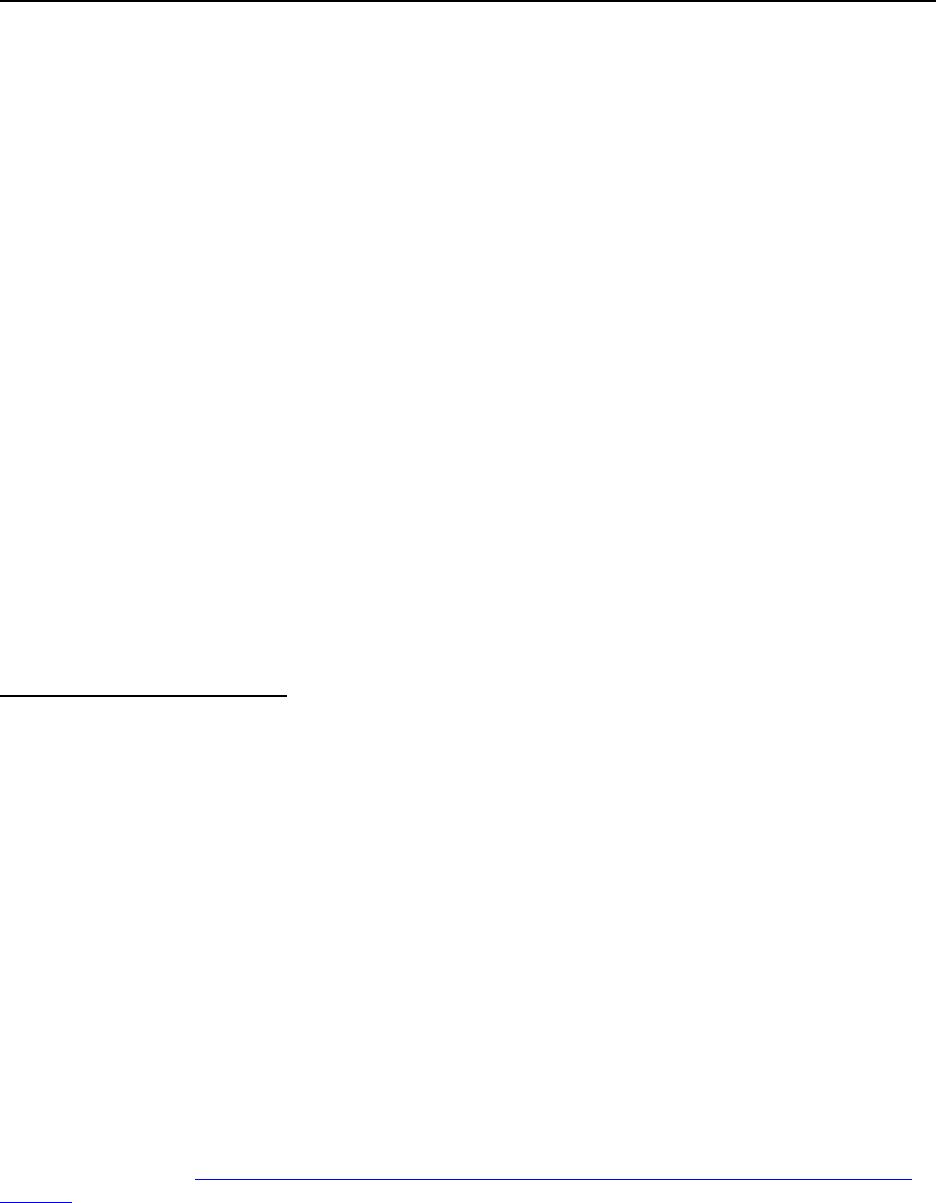
Federal Communications Commission FCC 23-21
14
blocking text messages from that number until circumstances change.
89
We cannot, based on the record,
adopt a standard to determine whether a text should be blocked or a reasonable time for the provider for
make such a determination. These commenters also ask us to require that blocking disputes be resolved
immediately, and no longer than six hours after receiving the dispute.
90
We do not have any information
in the record regarding a reasonable amount of time to resolve a dispute.
C. Other Proposals
32. We decline to adopt rules for several of the other topics on which we sought comment.
91
First, we decline to require text blocking notifications.
92
The record indicates that service providers are
already providing adequate notice when they block texts.
93
For instance, NORC states that “wireless
carriers already have an established response system that consists of approximately 2,000 codes” and,
“[w]hen a text fails to send, the sender will receive a code reply from a specific carrier’s number with
granular information about why the text failed, e.g., ‘Failed because of analytics blocking by carriers.’”
94
33. We also decline at this time to enact rules regarding safeguarding against blocking of
texts to 911 and other emergency numbers based on the record. For example, the Texas 911 Entities state
that illegal texting to 911 currently does not appear to be a problem at Public Safety Answering Points
(PSAPs).
95
We will continue to monitor potential threats from unauthorized 911 communications to
public safety and PSAPs, as these commenters suggest.
96
Should industry or consumer complaints
indicate that the situation has changed and that this category of texts is being blocked in a way that is
problematic, we will not hesitate to revisit the issue.
34. Additionally, we are not adopting standards to ensure competitively neutral and content-
neutral grounds for blocking;
97
the rule we are adopting here, mandatory blocking of texts that purport to
be from numbers on a reasonable DNO list, does not require a mobile wireless provider to examine the
content of texts themselves. Mandatory blocking is based solely on the spoofed number associated with
89
ABA Joint Commenters at 7.
90
Id.
91
In the NPRM, we sought comment on how our proposals may promote or inhibit advances in diversity, equity,
inclusion, and accessibility. One commenter observed that our proposal may have a disparate effect on deaf, hard of
hearing, visually impaired, impoverished, and neurodivergent people because they are more likely to rely on text
messages than phone calls. CRC Comments at 3-4. However, the rules we adopt here should protect all consumers,
including deaf, hard of hearing, visually impaired, impoverished, and neurodivergent persons from illegal texts. We
do not find, based on the record, that this Report and Order will inhibit advances in diversity, equity, inclusion, and
accessibility.
92
See, e.g., ABA Joint Commenters at 7; Ad Hoc Comments at 4-5; CCA Comments at 10-11; INCOMPAS Reply
at 4-5; Weave Reply at 5-6.
93
See, e.g., NORC Comments at 5; Campaign Registry Reply at 3 (parties can track messaging back to its origins so
that they can conduct the necessary follow up for the messaging in question); Verizon Reply at 3. Consumers may
use apps or features on their mobile device to filter or block texts; the reply code discussed by commenters would
apply to texts blocked by the mobile wireless providers.
94
NORC Comments at 5. Likewise, providers following CTIA’s “Messaging Security Best Practices” consent
requirements, or similar standards, are blocking texts that fail to comply with such best practices. See Messaging
Security Best Practices, https://api.ctia.org/wp-content/uploads/2022/06/Messaging-Security-Best-Practices-June-
2022.pdf. The CTIA Messaging Security Best Practices provides that “parties should respond within a reasonable
timeframe to lawful inquiries from other stakeholders regarding the sending of Unwanted Messages or other
potential abuses.” CTIA Messaging Security Best Practices at 3.22.
95
Texas 911 Entities Comments at 2.
96
Id.
97
See NPRM at para. 24.
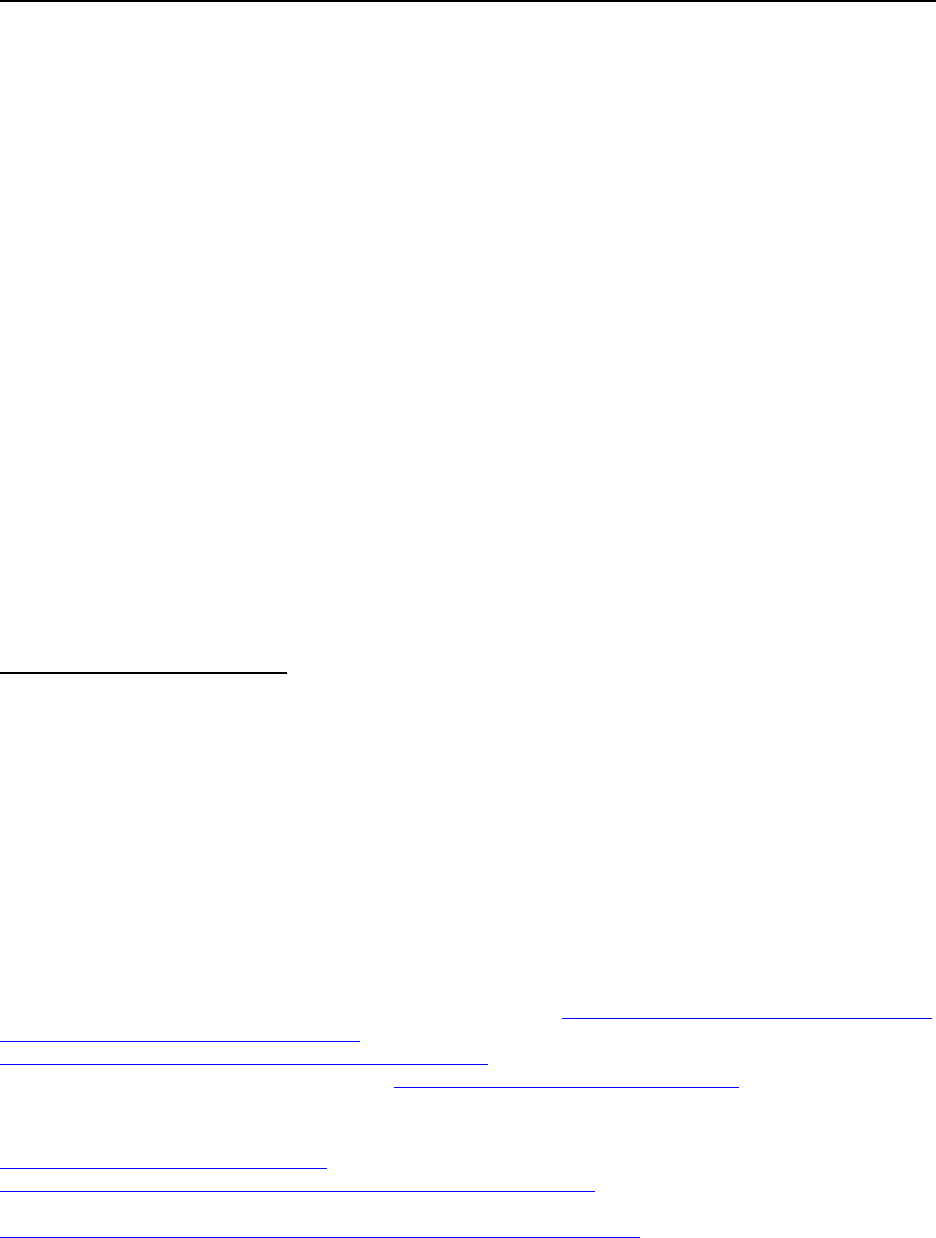
Federal Communications Commission FCC 23-21
15
the text message. We also decline to adopt a safe harbor for text blocking.
98
Because the blocking we
adopt is mandatory rather than discretionary, and because the texts that may be blocked are highly likely
to be illegal, we do not believe a safe harbor is necessary.
35. In the NPRM, we asked how consumer education and outreach could help address the
problem and if there are ways the Commission can enhance its spam text message consumer education
outreach and content.
99
We are encouraged by the measures that mobile wireless providers are taking to
inform their customers about unwanted and illegal text messages and the ways that they have facilitated
consumer reporting of such texts, such as forwarding spam to 7726 in order to report spam to wireless
service providers.
100
As CTIA explains, wireless providers have established 7726 (SPAM) for consumers
to report unwanted text messages.
101
Mobile wireless providers use information consumers report through
7726 to further calibrate their spam filters and blocking tools.
102
Further, reporting tools native to wireless
device operating systems, from both Apple and Google, provide consumers with a more streamlined
means of reporting spam text messages.
103
In addition, our website and the FTC’s website offer helpful
information on spam prevention to assist consumers.
104
36. We also decline to adopt PACE’s proposals regarding the maintenance of a DNO list.
105
PACE suggests that the Commission clarify who is responsible for maintaining a DNO list and adopt a
centralized DNO list maintained by a single body; it also asks that the Commission require that the DNO
list be scrubbed against the Reassigned Numbers Database and that any reassigned numbers be removed
from the DNO list.
106
We decline to do so because PACE does not identify why our current approach for
DNO lists is flawed and thus how its proposal would correct a problem.
37. Finally, we decline to adopt caller ID authentication requirements for text messages
based on record uncertainty about the current feasibility of such a requirement.
107
For example, CTIA
98
See id. at para. 27.
99
See id. at paras. 37-38.
100
See, e.g., CTIA Comments at 8-9; M
3
AAG Comments at 4; Sinch Comments at 4; T-Mobile Comments at 6
(explaining that consumers can report spam by forwarding the message to 7726 (SPAM) and responding with the
message sender’s telephone number or other identifier); AT&T Reply at 5. T-Mobile also notes that it works with
Apple and Google to allow customers to report spam text messages. T-Mobile Comments at 6-7. Commenters
observe that device software automatically asks the device holder if a deleted message should be reported as “junk,”
which streamlines the spam reporting process for consumers and yields useful information about bad actors.
Telesign Comments at 4; T-Mobile Comments at 6-7.
101
CTIA Comments at 8.
102
Id. at 8-9.
103
Id.at 9, citing Apple, Block, filter, and report messages on iPhone, https://support.apple.com/guide/iphone/block-
filter-and-report-messages-iph203ab0be4/ios; Google Android, Report Spam,
https://support.google.com/messages/answer/9061432?hl=en. See also Apple, Recognize and avoid phishing
messages, phony support calls, and other scams, https://support.apple.com/en-us/HT204759 (last visited Feb. 17,
2023).
104
See, e.g., FCC, Consumer Alert, Scam Robotexts are a Rising Threat, (Jul. 28, 2022),
https://www.fcc.gov/robotext-scams-rise; FCC, Consumer Guides, Stop Unwanted Robocalls and Texts,
https://www.fcc.gov/consumers/guides/stop-unwanted-robocalls-and-texts (last visited Dec. 19, 2022); Federal
Trade Commission, Consumer Advice, How to Recognize and Report Spam Text Messages,
https://consumer.ftc.gov/articles/how-recognize-and-report-spam-text-messages (last visited Feb. 2, 2023).
105
PACE ex parte at 2-3.
106
Id.
107
See CTIA Comments at 18 (noting that STIR/SHAKEN applies exclusively to SIP technology, which does not
apply to the majority of text messages). Commenters explain that illegal and unwanted messages rarely come from
(continued….)

Federal Communications Commission FCC 23-21
16
explains that the architecture of wireless messaging platforms is such that wireless providers already
know the transmitting provider (e.g., wireless provider or messaging solutions aggregator) and user
identifier (whether long code, short code, or other marker) for text messages.
108
CTIA notes that mobile
wireless providers use this information to deliver text messages typically only from authorized providers
and user identifiers using valid originating information through appropriate routing channels, and to more
readily identify unauthorized traffic using illegitimate channels.
109
T-Mobile also notes that the current
anti-robocall regime is targeted at the primary sources of illegal robocalls, i.e., unverified telephone caller
ID information and a common carrier regulatory regime, which does not apply to text messages.
110
Other
commenters explain that STIR/SHAKEN would not be a viable solution if spoofing were more prevalent,
because among other reasons, STIR/SHAKEN only works on the Session Internet Protocol (SIP).
111
We
agree with providers, who argue that caller authentication solutions are “being actively considered that
may be able to complement the vetting and monitoring solutions in use today,” but that these efforts are
preliminary and require more study.
112
In the Further Notice, we seek comment on whether and how the
Commission can encourage efforts to develop technical solutions for text message authentication.
D. Legal Authority
38. We find that we have legal authority to require providers to block certain text messages
originating from NANP numbers and to require blockers to establish a point of contact for receiving and
resolving blocking complaints. First, we find that, under the TCPA, the Commission has authority over
the unsolicited text messages that fall within the scope of this order.
113
The TCPA restricts certain
autodialed and prerecorded or artificial voice calls to residential and wireless telephone numbers absent
the prior express consent of the called party.
114
The Commission has found that, for the purposes of the
TCPA, texts are included in the term “call.”
115
Because the Commission has authority to regulate certain
text messages under the TCPA, particularly with regard to messages sent using an autodialer and without
the consent of the called party, we have legal authority for the rules we adopt today.
39. Second, we find that we have authority under the Truth in Caller ID Act to adopt a
blocking requirement. The Truth in Caller ID Act makes unlawful the spoofing of caller ID information
“in connection with any voice service or text messaging service . . . with the intent to defraud, cause
harm, or wrongfully obtain anything of value.”
116
We find that adopting this requirement is necessary to
(Continued from previous page)
spoofed numbers and a caller ID authentication solution, even if feasible, would be unlikely to reduce unwanted and
illegal text messages. See, e.g., CTIA Comments at 4-5, 11; EZ Texting Comments at 5-6; M
3
AAWG Comments at
10; NetNumber Comments at 7 & Reply at 2-3; Sinch Comments at 6-7; Telesign Comments at 2-3; T-Mobile
Comments at 9-10; Verizon Comments at 7 & Reply at 4-5; WMC Global Comments at 2; Cloud Communications
Reply at 1-2; RWA Reply at 3-5; Vibes Reply at 2-4.
108
CTIA Comments at 17.
109
Id.
110
T-Mobile Comments at 2.
111
CTIA Comments at 18-19; Verizon Comments at 8; AT&T Reply at 9-10.
112
See, e.g., CTIA Comments at 18-19 & Reply at 13; iconectiv Comments at 3; NTCA Comments at 2-3; Sinch
Comments at 14; T-Mobile Comments at 10.
113
The Commission stated in the 2003 TCPA Order that the authority to regulate telemarketing derives from the
TCPA. 2003 TCPA Order, 18 FCC Rcd at 14070, para. 95. The Commission also observed that Congress
anticipated “that the FCC, under its TCPA rulemaking authority, might need to consider changes in technologies.”
Id. at 14092, para. 132.
114
47 U.S.C. § 227(b)(1)(A).
115
2003 TCPA Order, 18 FCC Rcd at 14115, para. 165.
116
47 U.S.C. § 227(e)(1).

Federal Communications Commission FCC 23-21
17
block calls that unlawfully spoof numbers on reasonable DNO lists, and thus is authorized by the Truth in
Caller ID Act.
40. Finally, we find that we have authority under Title III of the Act to adopt these measures.
As courts have recognized, Title III “endow[s] the Commission with ‘expansive powers’ and a
‘comprehensive mandate to “encourage the larger and more effective use of radio in the public
interest.”’
117
Section 303 of the Act grants the Commission authority to establish operational obligations
for licensees that further the goals and requirements of the Act if such obligations are necessary for the
“public convenience, interest, or necessity” and are not inconsistent with other provisions of law.
118
In
particular, section 303(b) authorizes the Commission to “[p]rescribe the nature of the service to be
rendered by each class of licensed stations and each station within each class,” and that is what our
mandatory blocking rule addresses here.
119
In addition, sections 307 and 316 of the Act allow the
Commission to authorize the issuance of licenses or adopt new conditions on existing licenses if such
actions will promote public interest, convenience, and necessity.
120
We find the requirements we adopt
for mobile wireless providers here are necessary to protect the public from illegal text messages and that
such a requirement is in the public interest. Because we find that the sources of authority identified above
provide sufficient authority for the rules we adopt today, we find it unnecessary to address other possible
sources of authority to adopt these rules.
41. We disagree with AT&T’s position that our regulatory intervention would have “an
enormous economic impact, and in view of the lack of clear statutory authority . . . the Commission
should await more direct authorization from Congress before proceeding to rules.”
121
First, AT&T’s
reliance on the Supreme Court’s decision in West Virginia v. EPA is inapt in this regulatory context,
where Congress has granted the Commission “expansive powers” and a “comprehensive mandate” to
“encourage the larger and more effective use of radio in the public interest” in Title III of the Act.
122
Congress’s delegation of broad spectrum management authority to the Commission—which is
longstanding and remains unaltered—recognizes that the field of radio communications is “dynamic” and
rapidly changing, and court decisions such as Cellco Partnership have recognized that the Commission
has broad authority under Title III to adopt rules addressing what services must be rendered by
licensees.
123
Second, the limited obligations on mobile wireless providers adopted here are far from the
“extraordinary case” involving the kind of “transformative” regulations at issue in West Virginia v.
117
Cellco P’ship v. FCC, 700 F.3d 534, 542 (D.C. Cir. 2012) (Cellco Partnership) (upholding the Commission's
authority under Title III to adopt data roaming rules) (quoting Nat’l Broad. Co. v. United States, 319 U.S. 190, 219
(1943) (Nat’l Broad Co.)).
118
47 U.S.C. § 303.
119
See Cellco P’ship, 700 F.3d at 543 (“Like other rules that govern Title III services, the data roaming rule merely
defines the form mobile-internet service must take for those who seek a license to offer it.”). We find several other
provisions of Section 303 relevant here. See 47 U.S.C. § 303(g) (requiring the Commission to “encourage the larger
and more effective use of radio in the public interest”); id. § 303(r) (authorizing the Commission to “[m]ake such
rules and regulations and prescribe such restrictions and conditions, not inconsistent with law, as may be necessary
to carry out the provisions of this [Act]”).
120
See 47 U.S.C. § 307; 316; see also Cellco P’ship, 700 F.3d at 543 (recognizing section 316 as additional Title III
authority for our data roaming rules).
121
AT&T Reply at 14 (citing West Virginia v. EPA, 142 S. Ct. 2587, 2608 (2022)).
122
Nat’l Broad. Co., 319 U.S. at 219.
123
See Cellco P’ship, 700 F.3d at 542-43; see also Implementation of the National Suicide Hotline Improvement Act
of 2018, Second Report and Order. 36 FCC Rcd 16901, 16933 (2021) (relying on the Commission’s Title III
authority, including sections 303, 307, and 316, to impose text-to-988 obligations on CMRS providers).
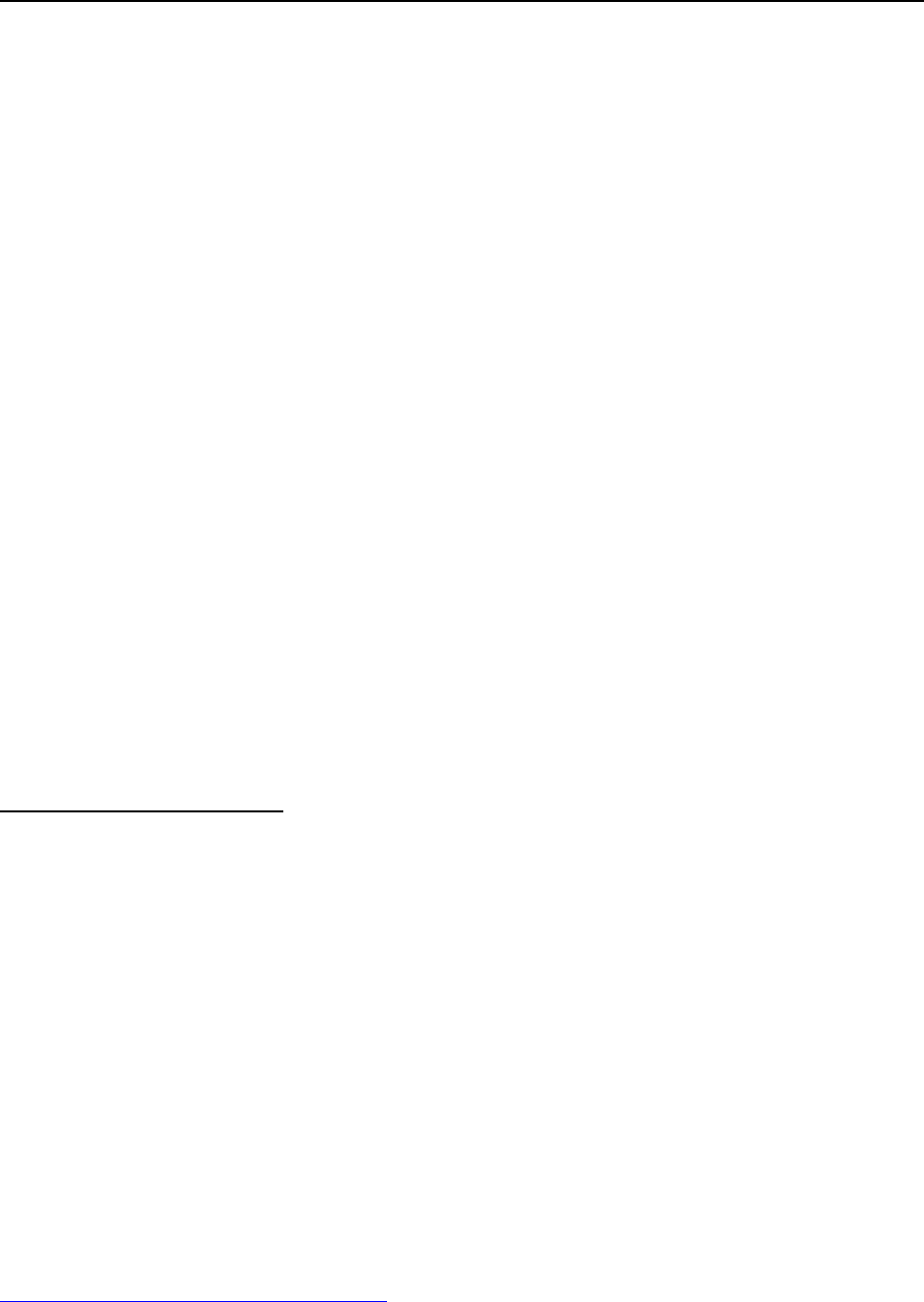
Federal Communications Commission FCC 23-21
18
EPA,
124
especially given the record evidence regarding licensees’ existing blocking practices.
125
42. AT&T’s argument is based on the premise that we would be adopting rules on the full
range of issues on which we sought comment in the NPRM, including caller ID authentication for text
messages, as well as an unsupported assertion that the rules would have an “enormous economic
impact.”
126
However, we are adopting only two narrow rules in this Report and Order, and we find that
these rules will not have an enormous economic impact and will not be overly burdensome for mobile
wireless providers to implement (in part, because some providers, like AT&T, are already “broadly
block[ing] text messages sent from invalid, unallocated, unassigned, and spoofed numbers”).
127
Further,
AT&T has not provided any evidence that the rules adopted here would, in fact, have an enormous
economic impact. For the reasons explained above, we find that the Commission does have ample
authority to adopt these new rules.
E. Cost-Benefit Analysis
43. AT&T challenges the proposed cost benefit analysis in the NPRM, but it provides no
basis for challenging the assumptions behind it.
128
In the analysis of the expected benefits, we estimated
that consumers incur a 5 cent nuisance harm for each spam text received.
129
Further, we estimated that
consumers incur $2 billion in harm due to fraudulent spam texts annually.
130
Our estimates were based on
our experience estimating the harms caused by illegal robocalls. In that context, we assumed that each
robocall causes a 10 cent nuisance harm and that fraudulent robocalls result in annual harm of $10.5
billion.
131
We proposed to attribute a lower nuisance harm of 5 cents to a spam text because we believed
that they are less disruptive to consumers, e.g., because consumers can simply delete a text instead of
having to listen to a robocall first then delete it. Further, we assumed that harm from fraudulent spam
texts is about 20% of the harm caused by fraudulent robocalls fraud costs.
44. Our estimate of the harm due to fraudulent texts was conservative. For example, one
source puts financial losses due to spam texts at $28 billion in 2022.
132
In total, we estimated that the
blocking of illegal robotexts would achieve an annual benefit of at least $6.3 billion.
133
In the NPRM we
sought comment on these assumptions and received no alternatives in the record.
134
124
West Virginia v. EPA, 142 S. Ct. at 2608, 2610.
125
See, e.g., AAPC Comments at 2; Blooston Comments at 3; CCA Comments at 3; CTIA Comments at 6-11 &
Reply at 3-7; EZ Texting Comments at 6; M
3
AAWG Comments at 10; iconectiv Comments at 2; Infobip Reply at 2;
Pinger Comments at 2; Sinch Comments at 7-8; Somos Comments at 7-8; Telesign Comments at 3; T-Mobile
Comments at 3; Verizon Comments at 2; VON Comments at 3; AT&T Reply at 5 (AT&T employs a multi-layered
defense against illegal and unwanted text messages that incorporates technological innovation and proactive
collaboration).
126
AT&T Reply at 5.
127
Id.
128
Id.at 13-14.
129
NPRM at para. 43.
130
Id. at para. 44.
131
Call Authentication Trust Anchor, Implementation of TRACED Act Section 6(a)—Knowledge of Customers by
Entities with Access to Numbering Resources, WC Docket Nos. 17-97, 20-67, Report and Order and Further Notice
of Proposed Rulemaking, 35 FCC Rcd 3241, 3263, paras. 47-48 (2020) (STIR/SHAKEN Order).
132
Robokiller, The Robokiller Report: 2022 Mid-Year Phone Scam Insights at 9 (2022),
https://www.robokiller.com/the-robokiller-report (last visited Feb. 14, 2023).
133
See NPRM at para. 43.

Federal Communications Commission FCC 23-21
19
45. Since we released the NPRM, the number of spam texts has increased to an estimated 147
billion annually.
135
Assuming a 5 cent nuisance cost per spam text and a conservative $2 billion fraud
cost for all spam texts, the total harm of spam texts would be $9.35 billion annually.
136
While the rule we
adopt today will not block all spam texts, it will block some percentage of them. Even a small reduction
in spam texts would result in benefit to consumers of many millions of dollars annually. Because costs to
providers are expected to be modest, given the record evidence regarding licensees’ existing blocking
practices,
137
we expect the benefits of this policy to exceed its costs.
46. In our analysis of the expected costs in the NPRM, we estimated that the text blocking
requirement would result in an overall reduction of costs to text service providers due to the expected
reduction in network congestion costs incurred by providers as a result of spam texts.
138
We sought
comment on these estimated net cost savings due to reduction in network congestion,
139
and received no
comments challenging this estimate.
140
In addition, we estimate that out-of-pocket costs to mobile
wireless providers to comply with the new blocking rule will be modest given the record evidence
regarding providers’ existing blocking practices and, as noted above, that any such costs will be more
than offset by cost savings from reduced network congestion.
47. Based on the analysis of the anticipated benefits and costs discussed above, and in light
of the record evidence regarding mobile wireless providers’ existing blocking practices, we believe the
benefits of the rules adopted in this Report and Order significantly outweigh their costs.
IV. FURTHER NOTICE OF PROPOSED RULEMAKING
48. In this Further Notice of Proposed Rulemaking, we seek comment on additional
protections for consumers against illegal robotexts. We first seek comment on whether to require
terminating mobile wireless providers to block text messages when notified by the Commission that they
are likely scams. We also seek comment on text message authentication. Next, we propose to extend Do-
Not-Call protections to marketing text messages. We also seek to ban the practice of obtaining a single
consumer consent as justification for calls and texts from multiple, sometimes hundreds, of sellers and
potential fraudsters.
49. Our action in the Report and Order above provides a baseline level of consumer
protection from spoofed text messages. The actions we propose below would address more potentially
illegal messages. Consumers have come to rely on texts from trusted institutions that may not be on a
DNO list, such as a child’s school, a doctor’s office, state and local governments, utility providers, and
financial institutions. The messages they carry are often brief and consumers’ expectation upon receipt is
that such messages contain important, and perhaps urgent, information. For that reason, consumers may
have a more difficult time recognizing these scams.
141
(Continued from previous page)
134
We note that AT&T offers no alternative estimate of the economic benefit from blocking illegal texts. See
AT&T Reply at 13-14.
135
Id. at 4.
136
$0.05*147 billion + $2 billion = $9.35 billion.
137
See para. 21, supra.
138
See NPRM at para. 47.
139
See id. at para. 46. The NPRM stated that the Commission would analyze “any detailed cost data” received in
comments. See id. at para. 47. However, no detailed cost data was submitted in the record.
140
We note that AT&T does not challenge this point. See AT&T Reply at 13-14.
141
Public Knowledge Reply at 2.

Federal Communications Commission FCC 23-21
20
A. Block Texts Upon Commission Notification
50. We propose to require terminating mobile wireless providers to investigate and
potentially block texts from a sender after they are on notice from the Commission that the sender is
transmitting suspected illegal texts, similar to our requirement for gateway providers with respect to voice
calls. Where texts are clearly illegal, and where the Commission has put providers on notice of the illegal
texts, we believe mobile wireless providers have no legitimate reason to transmit the texts. We therefore
seek comment on extending this approach, which the Commission has in place for call blocking, to text
blocking.
142
51. In the Gateway Provider Report and Order, the Commission required gateway providers
to block illegal voice traffic when notified of such traffic by the Commission through the Enforcement
Bureau.
143
We seek comment on whether we should adopt the same process here for mobile wireless
providers and texts, as we did there for gateway providers and voice calls.
52. Specifically, our rules (in section 64.1200(n)(5)) require the Enforcement Bureau to issue
a Notification of Suspected Illegal Traffic that: (1) identifies with as much particularity as possible the
suspected illegal traffic; (2) provides the basis for the Enforcement Bureau’s reasonable belief that the
identified traffic is unlawful; (3) cites the statutory or regulatory provisions the suspected illegal traffic
appears to violate; and (4) directs the provider receiving the notice that it must comply with the
requirements in section 64.1200(n)(5) of the Commission’s rules by a specified date that gives the
provider a minimum of 14 days to comply.
144
Notified gateway voice providers must then promptly
investigate the identified traffic and either block the identified traffic and substantially similar traffic on
an ongoing basis or respond to the Commission that the provider has a reasonable basis for concluding
that the identified calls are not illegal.
145
If a provider fails to comply, the Commission established a
process through which the Enforcement Bureau can require all providers immediately downstream from
that gateway provider to block all traffic from that provider.
146
53. We seek comment on whether there are any differences between calling and texting that
would suggest that this model would not work well for texting. What would be the cost to providers of
implementing such a requirement? Can providers and the Commission’s Enforcement Bureau properly
trace text messages to their originating provider to effectuate these rules? Are there additional
requirements the Commission should adopt to ease any traceback efforts for text messaging? Because
providers state that they already do a considerable amount of text blocking,
147
we would not expect our
proposal to impose material additional costs. Is that correct? We seek comment on these questions
specifically and this recommendation generally.
B. Text Message Authentication and Spoofing
54. In the Order, we declined to adopt caller ID authentication requirements for text
142
See 47 CFR § 64.1200(n)(2).
143
Gateway Provider Report and Order, 2022 WL 1631842 at paras. 74-86; see 47 CFR § 64.1200(n)(5).
144
47 CFR § 64.1200(n)(5)(i)(A); see also Gateway Provider Report and Order, 2022 WL 1631842 at para. 80.
145
47 CFR § 64.1200(n)(5)(i)(A), (B); see also Gateway Provider Report and Order, 2022 WL 1631842 at para. 83.
146
47 CFR §§ 64.1200(n)(5)(ii), (iii), 64.1200(o); see also Gateway Provider Report and Order, 2022 WL 1631842
at paras. 84-86.
147
See, e.g., AAPC Comments at 2; Blooston Comments at 3; CCA Comments at 3; CTIA Comments at 6-11 &
Reply at 3-7; EZ Texting Comments at 6; M
3
AAWG Comments at 10; iconectiv Comments at 2; Infobip Reply at 2;
Pinger Comments at 2; Sinch Comments at 7-8; Somos Comments at 7-8; Telesign Comments at 3; T-Mobile
Comments at 3; Verizon Comments at 2; VON Comments at 3; AT&T Reply at 5.
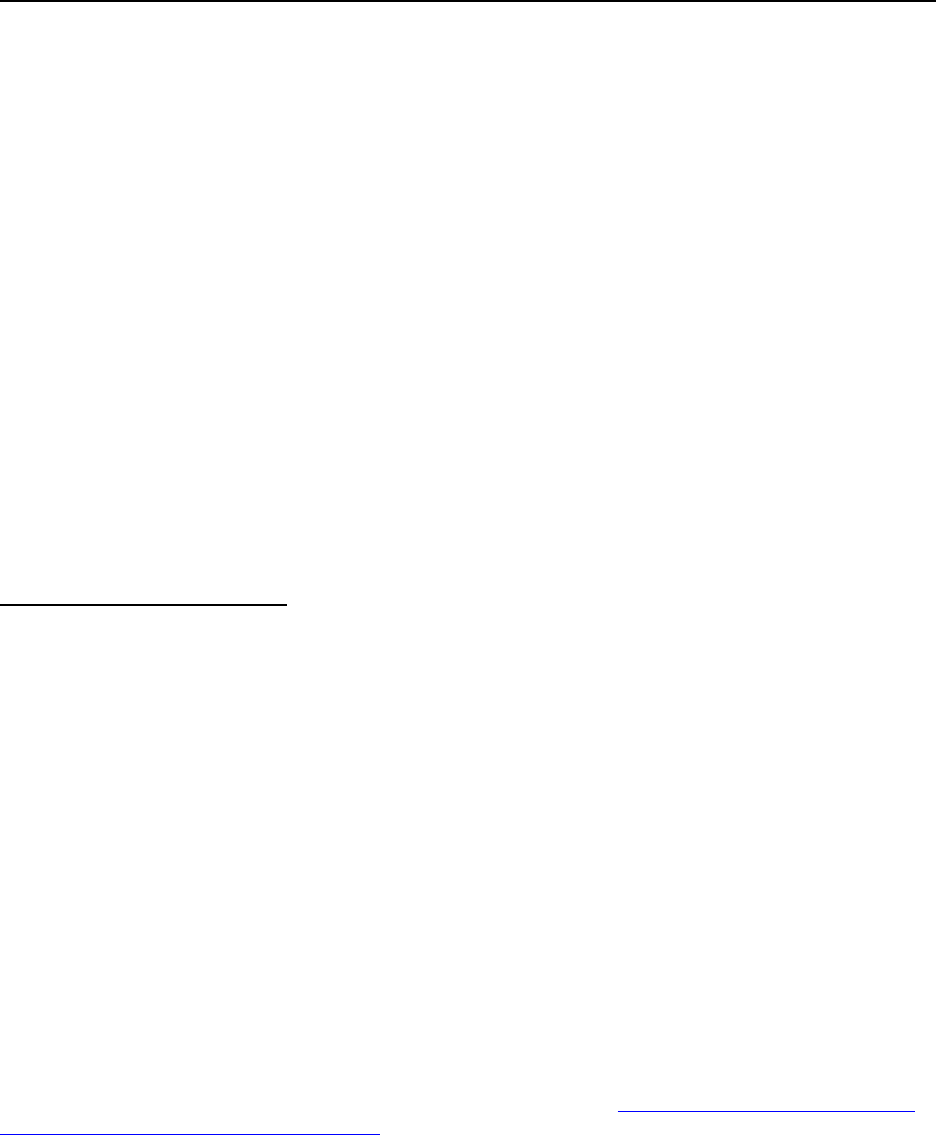
Federal Communications Commission FCC 23-21
21
messages based on the current record.
148
We seek comment on the extent of number spoofing and if there
are other solutions that are better targeted to address the problem of spoofed text messages. If so, what
are they and how can the Commission encourage their development and adoption? We note that, while
some commenters say number spoofing is not a problem for text messages,
149
others say bad actors spoof
their phone numbers or identities.
150
In the robocalling context, the Commission has found that a subset
of small voice service providers are responsible for a large number of illegal robocalls.
151
Is a similar
dynamic at issue with robotexts? If so, how might the Commission target these specific providers? How
might the Commission encourage industry members to collaborate and finalize technical solutions for
authenticating text messages and mitigating illegal text messages? For example, should the Commission
adopt a deadline for providers to develop a text message authentication solution or an alternative technical
solution for addressing the problem of spoofed text messages? Commenters should address how the
Commission can ensure non-discriminatory policies in adopting text authentication measures.
152
C. Clarifying Do-Not-Call Protections for Text Messages
55. To the extent it remains unclear, we propose to clarify that National DNC Registry
protections apply to text messages as well as voice calls and to codify this clarification in our rules. The
National Do-Not-Call Registry has been operational for almost two decades and currently protects over
246 million telephone numbers from telemarketing sales calls, or “telephone solicitations.”
153
As such, it
represents a critical component of our policy strategy against unwanted calls. Although the Commission
has stated that “text messages” are “calls” for TCPA purposes,
154
it has not explicitly included text
messages in the codified DNC rules.
155
The Commission’s DNC rules protect wireless phone subscribers
148
Most commenters to our NPRM observe that illegal and unwanted messages rarely come from spoofed numbers
and a caller ID authentication solution, even if feasible, would be unlikely to reduce unwanted and illegal text
messages. See, e.g., CTIA Comments at 4-5, 11; EZ Texting Comments at 5-6; M
3
AAWG Comments at 10;
NetNumber Comments at 7 & Reply at 2-3; Sinch Comments at 6-7; Telesign Comments at 2-3; T-Mobile
Comments at 9-10; Verizon Comments at 7 & Reply at 4-5; WMC Global Comments at 2; Cloud Communications
Reply at 1-2; RWA Reply at 3-5; Vibes Reply at 2-4.
149
CTIA Comments at 4-5.
150
ABA Joint Commenters Comment at 3 (stating that “[o]ur members report that bad actors illegally ‘spoof’ phone
numbers belonging to legitimate businesses when sending text messages – i.e., the bad actor sends a text message
from a number that appears to belong to the legitimate business or sends a text message from the bad actor’s own
number, making it appear that it is from a legitimate business, with the intent to defraud the recipient”).
151
Call Blocking Fourth Report and Order, 36 FCC Rcd at 17844-17845, paras. 10-13.
152
See, e.g., VON Comments at 5 (observing that competitive neutrality must be at the forefront of any solution to
illegal texting and solutions must not endorse or enable anti-competitive practices that providers have seen in the
industry); Cloud Communications Reply at 3 (noting concerns that the industry’s application of current principles
and practices has led to discriminatory conduct and the blocking of legitimate texts); NORC Reply at 2 (noting that
the record demonstrates that there is a lack of transparency and accountability in blocking by mobile wireless
providers).
153
See FTC National Do-Not-Call Registry Data Book for Fiscal Year 2022, https://www.ftc.gov/reports/national-
do-not-call-registry-data-book-fiscal-year-2022 (last visited Feb. 2, 2023). The TCPA defines a “telephone
solicitation” as “the initiation of a telephone call or message for the purpose of encouraging the purchase or rental
of, or investment in, property, goods, or services, which is transmitted to any person” but not including calls or
messages made with prior express invitation or permission, to any person with whom the caller has as established
business relationship, or by a tax exempt nonprofit organization. 47 U.S.C. § 227(a)(3).
154
2003 TCPA Order, 18 FCC Rcd at 14115, para. 165.
155
Although the inclusion of text messages in the National DNC Registry protections has not been codified, the
Commission has previously taken the position that the National DNC Registry protects consumers from unwanted
text messages that contain marketing when the consumer has placed their number on the National DNC Registry.
See Emanuel (Manny) Hernandez, Click Cash Marketing, LLC, and Rock Solid Traffic, Citation and Order,
(continued….)

Federal Communications Commission FCC 23-21
22
by requiring prior express invitation or permission in writing for calls to wireless numbers on the DNC
Registry.
156
56. Commenters ask us to clarify that the DNC rules apply to both voice calls and texts.
157
As these commenters note, the DNC rules would bring considerable protection for recipients of marketing
texts. Specifically, our rules require that, before sending a marketing text to consumers, the texter must
have the consumer’s prior express invitation or permission, which must be evidenced by a signed, written
agreement between the consumer and seller, which states that the consumer agrees to be contacted by this
seller and includes the telephone number to which the calls may be placed.
158
57. We seek comment on this proposal. Would codifying the DNC protections to marketing
texts further protect consumers from unwanted marketing text messages? We note that the DNC
protections do not depend on whether the caller uses an autodialer, unlike some provisions of the
TCPA.
159
In this regard, would our proposal also represent an important codification of consumer
protections? Are there downsides to our proposal?
D. Closing the Lead Generator Loophole
58. We propose to ban the practice of obtaining a single consumer consent as grounds for
delivering calls and text messages from multiple marketers on subjects beyond the scope of the original
consent.
59. In an illustration of the issue, Assurance IQ describes a website that purports to enable
consumers to comparison shop for insurance.
160
The website sought consumer consent for calls and texts
from insurance companies and other various entities, including Assurance IQ’s “partner companies.”
161
The “partner companies” were listed in a hyperlink on the web page (i.e., they were not displayed on the
website without clicking on the link) and the list of “partner companies” included both insurance
companies and other entities that did not appear to be related to insurance.
162
60. Public Knowledge argues that lead generators and data brokers use hyperlinked lists to
harvest consumer telephone numbers and consent agreements on a website and pass that information to
(Continued from previous page)
Unauthorized Text Message Violations, 33 FCC Rcd 12382 (EB 2018) (Hernandez Citation) (Mr. Hernandez was
responsive to the citation and no fine was issued.).
156
47 CFR § 64.1200(e), (c)(2)(ii); 2003 TCPA Order, 18 FCC Rcd at 14034, paras. 28, 36. As we stated in the
2003 TCPA Order, “wireless subscribers may participate in the national do-not-call list” and “we will presume
wireless subscribers who ask to be put on the national do-not-call list to be ‘residential subscribers’” for purposes of
our DNC rules. Id. at 14039, para. 36.
157
NCLC/EPIC Joint Reply at 7 (the prohibition against making telephone solicitation calls to telephone numbers
registered on the National DNC Registry without consent applies to texts and calls that include solicitations).
158
47 CFR 64.1200(c)(2)(ii).
159
See 47 U.S.C. §§ 227(b)(1)(A), (b)(1)(D), (d)(1)(A).
160
Assurance IQ filed a petition before the Commission seeking clarification that a caller may rely on presumed
consent from online forms for TCPA purposes, among other things. Comments were due July 6, 2020. Assurance
IQ Petition (CG Docket No. 02-278, filed May 12, 2020) (Assurance IQ Petition). A request to withdraw the
Assurance IQ Petition was submitted May 10, 2022. Letter from Paul C. Besozzi, counsel for Assurance IQ, LLC,
to Marlene H. Dortch, Secretary, Federal Communications Commission (May 10, 2022), filed in CG Docket No. 02-
278.
161
Assurance IQ Petition at 2-3 (CG Docket No. 02-278, filed May 12, 2020).
162
Id.

Federal Communications Commission FCC 23-21
23
telemarketers and scam callers.
163
Commenters also provide an example of another insurance company
website that has 8,423 entities on the hyperlinked page.
164
The telemarketer that obtains the consumer’s
contact information from the lead generator may believe that it has the consumer’s prior express consent,
but, commenters argue, the consumer has not consented to the particular caller or callers, which may be
listed as “partner companies” in these arrangements.
165
61. We seek comment on amending our TCPA consent requirements to require that such
consent be considered granted only to callers logically and topically associated with the website that
solicits consent and whose names are clearly disclosed on the same web page.
166
The Commission has not
addressed this aspect of consent in the past. Would our proposal better protect consumers from receiving
large numbers of calls and texts they do not wish to receive when they visit websites such as comparison
shopping websites? Consumers may find comparison shopping websites helpful; how can we ensure that
they can consent to obtain further information from the site without receiving numerous calls and texts
from unrelated companies? Commenters should discuss whether our proposal would limit the value of
comparison-shopping sites to consumers. Are there alternatives to our proposal that would better protect
consumers from the harms we have identified? We also seek comment on Public Knowledge’s request
that prior express consent to receive calls or texts must be made directly to one entity at a time.
167
62. More broadly, we seek comment on the extent of the problem, our proposed rule, and
whether the proposed rule will clarify consent and help to eliminate illegal text messages and calls.
168
Are
there different or additional limitations on multi-party consent we should consider?
E. Digital Equity and Inclusion
63. The Commission, as part of its continuing effort to advance digital equity for all,
169
163
Public Knowledge Reply at 5-6. Commenters explain that telemarketers ignore the requirement that the express
invitation or permission can only be provided by the consumer directly to the seller. NCLC/EPIC Joint Reply at 7-8.
164
Letter from Margot Saunders, National Consumer Law Center, to Marlene H. Dortch, Secretary, Federal
Communications Commission (Dec. 16, 2022) at slide 10-11 (NCLC/EPIC 12/16 ex parte).
165
NCLC/EPIC Joint Comments at 4; NCLC/EPIC Joint Reply at 8 (explaining that clicking on a link that contains
a hidden URL with the names of thousands of sellers does not meet the E-Sign definition of an “electronic
signature,” because there was no separate agreement with each seller, and the consumer could not have had the
intent to sign such a separate agreement with each of the thousands of sellers listed on the webpage connected with
the URL).
166
Under our Truth in Billing rules, “clear and conspicuous” is notice that would be apparent to a reasonable
consumer. 47 CFR § 64.2401(e). We use the same definition for junk fax opt-out notice requirements. See Rules
and Regulations Implementing the Telecommunications Consumer Protection Act of 1991, Junk Fax Prevention Act
of 2005, CG Docket 02-278, Report and Order and Third Order on Reconsideration, 21 FCC Rcd 3787, 3801, para.
26 (2006) (Consistent with the definition in our truth-in-billing rules, “clear and conspicuous” for purposes of the
opt-out notice means a notice that would be apparent to a reasonable consumer.).
167
Public Knowledge Reply at 5. REACH contends that its standards limit the number of partners that may be
included in a disclosure, clearly advise the consumer that telemarketing calls will result from an online submission,
and prevent the use of prerecorded calls as the first contact to a consumer providing their information online.
REACH ex parte at 3. QuinStreet argues that any approach to consent should continue to enable consumer choice
and website owner flexibility, because many high-quality site owners are small- and medium-sized businesses.
Letter from Yaron Dori, Covington and Burling, LLP, counsel to Quinstreet, Inc., to Marlene H. Dortch, Secretary,
Federal Communications Commission (Mar. 9, 2023).
168
One commenter contends that the lack of standards in the lead generation industry is to blame for between
500,000,000 and 1 billion unwanted calls per month. REACH ex parte at 2.
169
Section 1 of the Communications Act provides that the FCC “regulat[es] interstate and foreign commerce in
communication by wire and radio so as to make [such service] available, so far as possible, to all the people of the
United States, without discrimination on the basis of race, color, religion, national origin, or sex.” 47 U.S.C. § 151.

Federal Communications Commission FCC 23-21
24
including people of color and others who have been historically underserved, marginalized, and adversely
affected by persistent poverty and inequality, invites comment on any equity-related considerations
170
and
benefits (if any) that may be associated with the proposals and issues discussed herein. Specifically, we
seek comment on how our proposals may promote or inhibit advances in diversity, equity, inclusion, and
accessibility.
F. Legal Authority
64. In the Further Notice of Proposed Rulemaking, we seek comment on four issues: (i)
whether to require terminating mobile wireless providers to block text messages when notified by the
Commission that they are likely scams; (ii) text message authentication; (iii) extending Do-Not-Call
protections to marketing text messages; and (iv) preventing marketers from using a single consumer
consent as justification for calls and texts from numerous parties.
65. We seek comment on our authority to adopt each of the measures. We note that the
Commission has authority to regulate certain text messages under the TCPA, particularly with regard to
messages sent using an autodialer and without the consent of the called party. We seek comment on
whether we have legal authority for the proposed rules under the TCPA. Do the TRACED Act or the
TCPA provide authority for our proposals? Do we have authority for our proposals under section 251(e)
of the Act, which provides us “exclusive jurisdiction over those portions of the North American
Numbering Plan that pertain to the United States?”
171
The Commission found authority to implement
STIR/SHAKEN for voice service providers under section 251(e) in order to prevent the fraudulent
exploitation of numbering resources.
172
Does section 251(e) of the Act grant us authority to adopt
implementation of authentication for text messages? We seek comment on whether that authority extends
to text messages. We seek comment on our authority under the Truth in Caller ID Act for these
proposals. The Commission found authority under this provision to mandate STIR/SHAKEN
implementation, explaining that it was “necessary to enable voice service providers to help prevent these
unlawful acts and to protect voice service subscribers from scammers and bad actors.”
173
We believe that
same reasoning applies here, especially given Congress’s focus on text messages, and seek comment on
that conclusion.
V. PROCEDURAL MATTERS
66. Paperwork Reduction Act. This document may contain new and modified information
collection requirements subject to the Paperwork Reduction Act of 1995 (PRA), Public Law 104-13. All
such new or modified information collection requirements will be submitted to the Office of Management
and Budget (OMB) for review under section 3507(d) of the PRA. OMB, the general public, and other
federal agencies will be invited to comment on any new or modified information collection requirements
contained in this proceeding. In this present document, we have assessed the effects of our requirement
that mobile wireless providers block texts purporting to be from NANP numbers on a reasonable DNO
list, which include numbers that purport to be from invalid, unallocated, or unused numbers, and NANP
170
We define the term “equity” consistent with Executive Order 13985 as the consistent and systematic fair, just,
and impartial treatment of all individuals, including individuals who belong to underserved communities that have
been denied such treatment, such as Black, Latino, and Indigenous and Native American persons, Asian Americans
and Pacific Islanders and other persons of color; members of religious minorities; lesbian, gay, bisexual,
transgender, and queer (LGBTQ+) persons; persons with disabilities; persons who live in rural areas; and persons
otherwise adversely affected by persistent poverty or inequality. See Exec. Order No. 13985, 86 Fed. Reg. 7009,
Executive Order on Advancing Racial Equity and Support for Underserved Communities Through the Federal
Government (Jan. 20, 2021).
171
47 U.S.C. § 251(e).
172
STIR/SHAKEN Order, 35 FCC Rcd at 3260-61, para. 42.
173
Id. at 3262, para. 44.

Federal Communications Commission FCC 23-21
25
numbers for which the subscriber to the number has requested that texts purporting to originate from that
number be blocked. We find that, to the extent this requirement constitutes an information collection,
such collection will not present a substantial burden for small business concerns with fewer than 25
employees and that any such burdens would be far outweighed by the benefits to consumers from
blocking text messages that are highly likely to be illegal.
67. The Further Notice of Proposed Rulemaking may contain proposed new or modified
information collection requirements. The Commission, as part of its continuing effort to reduce
paperwork burdens, invites the general public and OMB to comment on any information collection
requirements contained in this document, as required by the Paperwork Reduction Act of 1995, Public
Law 104-13. In addition, pursuant to the Small Business Paperwork Relief Act of 2002, Public Law 107-
198, see 44 U.S.C. § 3506(c)(4), we seek specific comment on how we might further reduce the
information collection burden for small business concerns with fewer than 25 employees.
68. Compliance Deadline. We acknowledge that mobile wireless providers will need
sufficient time in which to comply with these new requirements.
174
We therefore require mobile wireless
providers to comply with both rules we adopt here no later than six months after publication of notice of
OMB approval under the Paperwork Reduction Act. This allows parties sufficient time to update their
processes and come into compliance.
69. Regulatory Flexibility Act. The Regulatory Flexibility Act of 1980, as amended
(RFA),
175
requires that an agency prepare a regulatory flexibility analysis for notice and comment
rulemakings, unless the agency certifies that “the rule will not, if promulgated, have a significant
economic impact on a substantial number of small entities.”
176
Accordingly, we have prepared a Final
Regulatory Flexibility Analysis (FRFA) concerning the impact of the rule changes contained in the
Report and Order on small entities. The FRFA is set forth in Appendix D. We have also prepared an
Initial Regulatory Flexibility Analysis (IRFA) concerning the possible impact of the rule changes
contained in the Further Notice on small entities. The IRFA is set forth in Appendix E.
70. Congressional Review Act. The Commission has determined, and the Administrator of
the Office of Information and Regulatory Affairs, Office of Management and Budget concurs, that this
rule is “non-major” under the Congressional Review Act, 5 U.S.C. § 804(2). The Commission will send
a copy of this Report and Order to Congress and the Government Accountability Office pursuant to 5
U.S.C. § 801(a)(1)(A).
71. Ex Parte Rules. The proceeding shall be treated as a “permit-but-disclose” proceeding in
accordance with the Commission’s ex parte rules.
177
Persons making ex parte presentations must file a
copy of any written presentation or a memorandum summarizing any oral presentation within two
business days after the presentation (unless a different deadline applicable to the Sunshine period applies).
Persons making oral ex parte presentations are reminded that memoranda summarizing the presentation
174
Several parties have requested the Commission give them additional time to implement these new requirements.
See, e.g., Blooston Comments at 4 (small providers should have additional time to comply); Weave Reply at 8
(same); RWA Reply at 5 (small providers should not have to comply until after the larger carriers have implemented
the new rule); CTIA ex parte at 4 (requesting 12 months at minimum, and longer for smaller providers); Letter from
Angela Simpson, Senior Vice President and General Counsel, Competitive Carriers Association to Marlene H.
Dortch, Secretary, Federal Communications Commission (Mar. 9, 2023) at 1 (CCA ex parte) (30 days is
insufficient).
175
See 5 U.S.C. § 603. The RFA, see 5 U.S.C. § 601, et seq., has been amended by the Small Business Regulatory
Enforcement Fairness Act of 1996 (SBREFA), Pub. L. No. 104-121, Title II, 110 Stat. 847 (1996). The SBREFA
was enacted as Title II of the Contract with America Advancement Act of 1996 (CWAAA).
176
Id. § 605(b).
177
47 CFR §§ 1.1200 et seq.

Federal Communications Commission FCC 23-21
26
must (1) list all persons attending or otherwise participating in the meeting at which the ex parte
presentation was made, and (2) summarize all data presented and arguments made during the
presentation. If the presentation consisted in whole or in part of the presentation of data or arguments
already reflected in the presenter’s written comments, memoranda or other filings in the proceeding, the
presenter may provide citations to such data or arguments in his or her prior comments, memoranda, or
other filings (specifying the relevant page and/or paragraph numbers where such data or arguments can be
found) in lieu of summarizing them in the memorandum. Documents shown or given to Commission
staff during ex parte meetings are deemed to be written ex parte presentations and must be filed
consistent with section 1.1206(b) of the Commission’s rules. In proceedings governed by section 1.49(f)
of the Commission’s rules or for which the Commission has made available a method of electronic filing,
written ex parte presentations and memoranda summarizing oral ex parte presentations, and all
attachments thereto, must be filed through the electronic comment filing system available for that
proceeding, and must be filed in their native format (e.g., .doc, .xml, .ppt, searchable .pdf). Participants in
this proceeding should familiarize themselves with the Commission’s ex parte rules.
178
72. Filing of Comments and Reply Comments. Pursuant to sections 1.415 and 1.419 of the
Commission’s rules, 47 CFR §§ 1.415, 1.419, interested parties may file comments and reply comments
on or before the dates indicated on the first page of this document. Comments may be filed using the
Commission’s Electronic Comment Filing System (ECFS). See Electronic Filing of Documents in
Rulemaking Proceedings, 63 FR 24121 (1998).
• Electronic Filers: Comments may be filed electronically using the Internet by accessing the
ECFS: http://apps.fcc.gov/ecfs/.
• Paper Filers: Parties who choose to file by paper must file an original and one copy of each
filing.
• Filings can be sent by commercial overnight courier, or by first-class or overnight U.S. Postal
Service mail. All filings must be addressed to the Commission’s Secretary, Office of the
Secretary, Federal Communications Commission.
• Commercial overnight mail (other than U.S. Postal Service Express Mail and Priority Mail)
must be sent to 9050 Junction Drive, Annapolis Junction, MD 20701. U.S. Postal Service first
class, Express, and Priority mail must be addressed to 45 L Street NE, Washington, D.C. 20554.
• Effective March 19, 2020, and until further notice, the Commission no longer accepts any hand
or messenger delivered filings. This is a temporary measure taken to help protect the health and
safety of individuals, and to mitigate the transmission of COVID-19. See FCC Announces
Closure of FCC Headquarters Open Window and Change in Hand-Delivery Policy, Public
Notice, 35 FCC Rcd 2788 (OMD 2020).
73. People with Disabilities. To request materials in accessible formats for people with
disabilities (Braille, large print, electronic files, audio format), send an e-mail to [email protected] or call
the Consumer and Governmental Affairs Bureau at 202-418-0530 (voice).
74. Availability of Documents. Comments, reply comments, ex parte submissions, and the
Report and Order and Further Notice of Proposed Rulemaking will be available via ECFS. Documents
will be available electronically in ASCII, Microsoft Word, and/or Adobe Acrobat. When the FCC
Headquarters reopens to the public, documents will also be available for public inspection during regular
business hours in the FCC Reference Center, Federal Communications Commission, 45 L Street NE,
Washington, D.C. 20554.
75. Additional Information. For additional information on this proceeding, contact Mika
Savir, [email protected] or 202 418-0384, of the Consumer and Governmental Affairs Bureau,
178
47 CFR § 1.49(f).

Federal Communications Commission FCC 23-21
27
Consumer Policy Division.
VI. ORDERING CLAUSES
76. Accordingly, IT IS ORDERED, pursuant to sections 4(i), 4(j), 227, 301, 303, 307, and
316 of the Communications Act of 1934, as amended, 47 U.S.C. §§ 154(i), 154(j), 227, 301, 303, 307,
and 316, that this Report and Order and Further Notice of Proposed Rulemaking IS ADOPTED.
77. IT IS FURTHER ORDERED that, pursuant to applicable procedures set forth in
sections 1.415 and 1.419 of the Commission’s rules, 47 CFR §§ 1.415, 1.419, interested parties may file
comments on the Further Notice of Proposed Rulemaking on or before 30 days after publication in the
Federal Register, and reply comments on or before 60 days after publication in the Federal Register.
78. IT IS FURTHER ORDERED that the Report and Order SHALL BE EFFECTIVE 30
days after publication in the Federal Register Compliance with sections 64.1200(p) and (r) of the
Commission’s rules, 47 CFR §§ 64.1200(p), (r), which may contain new or modified information
collection requirements, will not be required until six months after the Office of Management and Budget
completes review of any information collection requirements that the Consumer and Governmental
Affairs Bureau determines are required under the Paperwork Reduction Act. The Commission directs the
Consumer and Governmental Affairs Bureau to announce the compliance date for sections 64.1200(p)
and (r) by subsequent Public Notice and to cause section 64.1200 to be revised accordingly.
79. IT IS FURTHER ORDERED that the Commission’s Consumer and Governmental
Affairs Bureau, Reference Information Center, SHALL SEND a copy of this Report and Order and
Further Notice of Proposed Rulemaking, including the Initial Regulatory Flexibility Analysis and the
Final Regulatory Flexibility Analysis, to the Chief Counsel for Advocacy of the Small Business
Administration.
80. IT IS FURTHER ORDERED that the Office of the Managing Director, Performance
Evaluation and Records Management, SHALL SEND a copy of this Report and Order in a report to be
sent to Congress and to the Governmental Accountability Office pursuant to the Congressional Review
Act, see 5 U.S.C. § 801(a)(1)(A).
FEDERAL COMMUNICATIONS COMMISSION
Marlene H. Dortch
Secretary

Federal Communications Commission FCC 23-21
28
APPENDIX A
Final Rules
PART 64—MISCELLANEOUS RULES RELATING TO COMMON CARRIERS
Subpart L—Restrictions on Telemarketing, Telephone Solicitation, and Facsimile Advertising
1. Amend § 64.1200 by adding new paragraphs (p) and (q) to read:
(p) A mobile wireless provider must block a text message purporting to originate from a North American
Numbering Plan number on a reasonable do-not-originate list. A list so limited in scope that it leaves out
obvious North American Numbering Plan numbers that could be included with little effort may be
deemed unreasonable. The do-not-originate list may include only:
(1) North American Numbering Plan Numbers for which the subscriber to the number has requested
that texts purporting to originate from that number be blocked;
(2) North American Numbering Plan numbers that are not valid;
(3) Valid North American Numbering Plan numbers that are not allocated to a provider by the North
American Numbering Plan Administrator; and
(4) Valid North American Numbering Plan numbers that are allocated to a provider by the North
American Numbering Plan Administrator, but are unused, so long as the provider blocking the message is
the allocatee of the number and confirms that the number is unused or has obtained verification from the
allocatee that the number is unused at the time of blocking.
(q) Paragraph (p) of this section may contain an information-collection and/or recordkeeping
requirement. Compliance with paragraph (p) will not be required until this paragraph (q) is removed or
contains a compliance date, which will not occur until after the Office of Management and Budget
completes review of such requirements pursuant to the Paperwork Reduction Act or until after the
Consumer and Governmental Affairs Bureau determines that such review is not required. The
Commission directs the Consumer and Governmental Affairs Bureau to announce a compliance date for
paragraph (p) by subsequent Public Notice and to cause this section 64.1200 to be revised accordingly.
2. Amend § 64.1200 by adding new paragraph (r) to read:
(r) A mobile wireless provider must provide a point of contact or ensure its aggregator partners or
blocking contractors that block text messages on its network provide a point of contact to resolve
complaints about erroneous blocking from message senders that can document that their messages have
been blocked. Such point of contact may be the same point of contact for voice call blocking error
complaints.

Federal Communications Commission FCC 23-21
29
APPENDIX B
List of Commenters
Commenter
Abbreviated Name
Date Filed
Aaron Read
Aaron Read
10/3/22
AB Handshake Corporation
AB Handshake
11/10/22
Ad Hoc Telecom Users Committee
Ad Hoc
11/10/22
Aigbe Omoigui et al
Omoigui Express Comment
10/11/22
American Association of Political
Consultants
AAPC
11/10/22
American Bankers Association, ACA
International, American Financial
Services Association, Credit Union
National Association, Mortgage
Bankers Association, National
Association of Federally-Insured
Credit Unions, National Council of
Higher Education Resources, and
Student Loan Servicing Alliance
ABA Joint Commenters
11/10/22
Anna K.
Anna K. Express Comment
10/18/22
Anonymous
10/13/22
Belle Hillenburg
Hillenburg
10/10/22
Blooston Rural Carriers
Blooston
11/10/22
Cameron Boyd
Boyd Express Comment
11/9/22
CallFire, Inc. (EZ Texting)
EZ Texting
11/10/22
Campaign Verify, Inc.
Campaign Verify
11/10/22
Cloud Communications Alliance
Cloud Communications
11/10/22
Coalition for Open Messaging
Coalition for Open
Messaging
11/10/22
Competitive Carriers Association
CCA
11/10/22
Consumer Relations Consortium
CRC
11/9/22
CTIA—The Wireless Association®
CTIA
11/10/22
Electronic Privacy Information Center
(EPIC), the National Consumer Law
(NCLC) on behalf of its low-income
clients, Consumer Action, Consumer
Federation of America, National
Association of Consumer Advocates,
National Consumers League, Public
Knowledge, and U.S. PIRG
NCLC/EPIC Joint
Commenters
11/10/22

Federal Communications Commission FCC 23-21
30
INCOMPAS
INCOMPAS
11/10/22
iconectiv, LLC
iconectiv
11/10/22
Messaging Malware Mobile Anti-
Abuse Working Group
M
3
AAWG
11/8/22
National Opinion Research Center
NORC
11/10/22
NetNumber, Inc.
NetNumber
11/10/22
Neustar, Inc.
Neustar
11/10/22
NTCA—The Rural Broadband
Association
NTCA
11/10/22
Pinger, Inc.
Pinger
11/9/22
Professional Associations for
Customer Engagement
PACE
11/10/22
Rebekah Schmidt
Schmidt
11/21/22
Sinch America, Inc.
Sinch
11/10/22
Somos, Inc.
Somos
11/10/22
State Voices
State Voices
11/10/22
Telesign Corporation
Telesign
11/9/22
Terra Nova Telecom, Inc.
Terra Nova
11/10/22
Texas 9-1-1 Alliance, the Texas
Commission on State Emergency
Communications, and the Municipal
Emergency Communication Districts
Association
Texas 911 Entities
11/10/22
T-Mobile USA, Inc.
T-Mobile
11/10/22
Verizon
Verizon
11/10/22
Voice on the Net Coalition
VON
11/10/22
WMC Global
WMC
10/21/22
Reply Commenter
Abbreviated Name
Date Filed
ACT│The App Association
App Association
12/9/22
AT&T Services, Inc.
AT&T
12/9/22
Campaign Registry, Inc.
Campaign Registry
12/9/22
Cloud Communications Alliance
Cloud Communications
12/9/22
CTIA—The Wireless Association®
CTIA
12/9/22
Fifty-one State Attorneys General
State AGs
12/9/22
INCOMPAS
INCOMPAS
12/11/22
Infobip, Inc.
Infobip
12/9/22

Federal Communications Commission FCC 23-21
31
NetNumber, Inc.
NetNumber
12/9/22
National Consumer Law Center
(NCLC), Electronic Privacy
Information Center (EPIC) on behalf
of NCLC’s low-income clients,
Appleseed Foundation, Center for
Responsible Lending, Consumer
Action, Consumer Federation of
America, Jacksonville Area Legal
Aid, Inc. (FL), Legal Services of New
Jersey, Mobilization for Justice (NY),
Mountain State Justice (WV),
National Association of Consumer
Advocates, National Consumers
League, Shriver Center on Poverty
Law (IL), South Carolina Appleseed,
Texas Appleseed, Tzedek DC, U.S.
PIRG, and Virginia Poverty Law
Center.
NCLC/EPIC Joint Reply
12/9/22
National Opinion Research Center
NORC
12/9/22
Overwhelmed Citizen
11/28/22
Public Knowledge
Public Knowledge
11/25/22
Rural Wireless Association, Inc.
RWA
12/9/22
Twilio, Inc.
Twilio
12/9/22
Verizon
Verizon
12/9/22
Vibes Media, LLC
Vibes
12/9/22
Weave Communications, Inc.
Weave
12/8/22
Ex Parte Filing/Congressional
Abbreviated Name
Date filed
Letter from The Honorable Brian
Schatz, U.S. Senate, to Jessica
Rosenworcel, Chairwoman, Federal
Communications Commission
Schatz Letter
12/19/22
Letter from Nadejda Papernaia, AB
Handshake Corp., to Marlene H.
Dortch, Secretary, Federal
Communications Commission (Nov.
4, 2022)
AB Handshake 11/4 ex
parte
11/4/22
Letter from Nadejda Papernaia, AB
Handshake Corp., to Marlene H.
Dortch, Secretary, Federal
Communications Commission (Dec.
13, 2022)
AB Handshake 12/13 ex
parte
12/13/22
Letter from Harold Feld, Public
Knowledge, to Marlene H. Dortch,
Public Knowledge 12/5 ex
12/5/22

Federal Communications Commission FCC 23-21
32
Secretary, Federal Communications
Commission (Dec. 5, 2022)
parte
Letter from Margot Saunders,
National Consumer Law Center, to
Marlene H. Dortch, Secretary,
Federal Communications
Commission (Dec. 16, 2022)
NCLC/EPIC 12/16 ex parte
12/16/22
Letter from Coalition for Open
Messaging and State Voices to
Marlene H. Dortch, Secretary,
Federal Communications
Commission (Mar. 9, 2023)
Coalition for Open
Messaging and State
Voices Joint ex parte
3/9/23
Letter from Scott Bergmann, Senior
Vice President, Regulatory Affairs,
CTIA, to Marlene H. Dortch,
Secretary, Federal Communications
Commission (Mar. 7, 2023)
CTIA 3/8/23 ex parte
3/8/23
Letter from Leah Dempsey, Counsel,
ACA International, Elizabeth M.
Sullivan, Senior Director of
Advocacy and Counsel, Credit Union
National Association, Celia Winslow,
Senior Vice President, American
Financial Services Association, Ann
Petros, Vice President of Regulatory
Affairs, National Association of
Federally-Insured Credit Unions to
Marlene H. Dortch, Secretary,
Federal Communications
Commission (Mar. 9, 2023)
ACA Joint ex parte
3/9/23
Letter from Yaron Dori, Covington
and Burling, LLP, counsel to
Quinstreet, Inc., to Marlene H.
Dortch, Secretary, Federal
Communications Commission (Mar.
9, 2023)
Quinstreet ex parte
3/9/23
Letter from Angela Simpson, Senior
Vice President and General Counsel,
Competitive Carriers Association to
Marlene H. Dortch, Secretary,
Federal Communications
Commission (Mar. 9, 2023)
CCA ex parte
3/9/23
Letter from Michele A. Shuster,
MacMurray and Shuster, counsel for
Professional Associations for
Customer Engagement to Marlene H.
Dortch, Secretary, Federal
Communications Commission (Mar.
PACE ex parte
3/9/23

Federal Communications Commission FCC 23-21
33
9, 2023)
Letter from Eric J. Troutman,
President, Responsible Enterprises
Against Consumer Harassment to
Marlene H. Dortch, Secretary,
Federal Communications
Commission (Mar. 9, 2023)
REACH ex parte
3/9/23
Letter from Christopher L. Shipley,
INCOMPAS; David Casem, Telnyx;
Paula Boyd, Microsoft; Helen Marie
Berg, Google, Michael Pryor, Cloud
Communications Alliance; Greg
Rogers, Bandwidth to Marlene H.
Dortch, Secretary, Federal
Communications Commission (Mar.
10, 2023)
INCOMPAS Joint ex parte
3/10/23
Letter from Scott Bergmann, Senior
Vice President, Regulatory Affairs,
CTIA, to Marlene H. Dortch,
Secretary, Federal Communications
Commission (Mar. 10, 2023)
CTIA 3/10/23 ex parte
3/10/23
Letter from Scott Bergmann, Senior
Vice President, Regulatory Affairs,
CTIA, to Marlene H. Dortch,
Secretary, Federal Communications
Commission (Mar. 12, 2023)
CTIA 3/12/23 ex parte
3/12/23

Federal Communications Commission FCC 23-21
34
APPENDIX C
Proposed Rules
PART 64—MISCELLANEOUS RULES RELATING TO COMMON CARRIERS
Subpart L—Restrictions on Telemarketing, Telephone Solicitation, and Facsimile Advertising
1. Amend § 64.1200 by revising section (e) to add “or texts” to read as follows:
(e) The rules set forth in paragraph (c) and (d) of this section are applicable to any person or entity
making telephone solicitations or telemarketing calls or texts to wireless telephone numbers to the extent
described in the Commission’s Report and Order, CG Docket No. 02–278, FCC 03–153, “Rules and
Regulations Implementing the Telephone Consumer Protection Act of 1991.”
2. Amend § 64.1200 by revising section (f)(9) to read as follows:
(f)(9) The term prior express written consent means an agreement, in writing, bearing the signature of the
person called that clearly authorizes the seller to deliver or cause to be delivered to the person called
advertisements or telemarketing messages using an automatic telephone dialing system or an artificial or
prerecorded voice, and the telephone number to which the signatory authorizes such advertisements or
telemarketing messages to be delivered. Prior express written consent for a call or text may be to a single
entity, or to multiple entities logically and topically associated. If the prior express written consent is to
multiple entities, the entire list of entities to which the consumer is giving consent must be clearly and
conspicuously displayed to the consumer at the time consent is requested. To be clearly and
conspicuously displayed, the list must, at a minimum, be displayed on the same web page where the
consumer gives consent.

Federal Communications Commission FCC 23-21
35
APPENDIX D
Final Regulatory Flexibility Analysis
1. As required by the Regulatory Flexibility Act of 1980,
1
as amended, an Initial
Regulatory Flexibility Analysis (IRFA) was incorporated in the Notice of Proposed Rulemaking
(NPRM).
2
The Federal Communications Commission (Commission) sought written public comment on
the proposals in the NPRM, including comment on the IRFA. The Commission received no comments in
response to the IRFA. This present Final Regulatory Flexibility Analysis (FRFA) conforms to the RFA.
3
A. Need for, and Objectives of, the Report and Order
2. The Order requires mobile wireless providers to block texts, at the network level, that
purport to be from numbers on a reasonable Do-Not-Originate (DNO)
list. Such texts are highly likely to
be illegal and for that reason the Commission is adopting a requirement to block at the network level.
The Order also requires providers and other entities to maintain a point of contact for texters to report
erroneously blocked texts.
B. Summary of Significant Issues Raised by Public Comments in Response to the IRFA
3. There were no comments filed that specifically addressed the proposed rules and policies
presented in the IRFA.
C. Response to Comments by the Chief Counsel for Advocacy of the Small Business
Administration
4. None. Pursuant to the Small Business Jobs Act of 2010, which amended the RFA, the
Commission is required to respond to any comments filed by the Chief Counsel for Advocacy of the
Small Business Administration (SBA), and to provide a detailed statement of any change made to the
proposed rules as a result of those comments.
5. The Chief Counsel did not file any comments in response to the proposed rules in this
proceeding.
D. Description and Estimate of the Number of Small Entities to Which the Rules Will
Apply
6. The RFA directs agencies to provide a description of and, where feasible, an estimate of
the number of small entities that may be affected by the proposed rules and policies, if adopted.
4
The
RFA generally defines the term “small entity” as having the same meaning as the terms “small business,”
“small organization,” and “small governmental jurisdiction.”
5
In addition, the term “small business” has
the same meaning as the term “small business concern” under the Small Business Act.
6
A “small
1
See 5 U.S.C. § 603. The RFA, see 5 U.S.C. §§ 601-612, has been amended by the Small Business Regulatory
Enforcement Fairness Act of 1996 (SBREFA), Pub. L. No. 104-121, Title II, 110 Stat. 857 (1996).
2
Targeting and Eliminating Unlawful Text Messages, CG Docket No. 21-402, Notice of Proposed Rulemaking,
FCC 22-72, 2022 WL 4545905 (2022) (NPRM).
3
See 5 U.S.C. § 604.
4
5 U.S.C. § 603(b)(3).
5
5 U.S.C. § 601(6).
6
5 U.S.C. § 601(3) (incorporating by reference the definition of “small-business concern” in the Small Business
Act, 15 U.S.C. § 632). Pursuant to 5 U.S.C. § 601(3), the statutory definition of a small business applies “unless an
agency, after consultation with the Office of Advocacy of the Small Business Administration and after opportunity
for public comment, establishes one or more definitions of such term which are appropriate to the activities of the
agency and publishes such definition(s) in the Federal Register.”
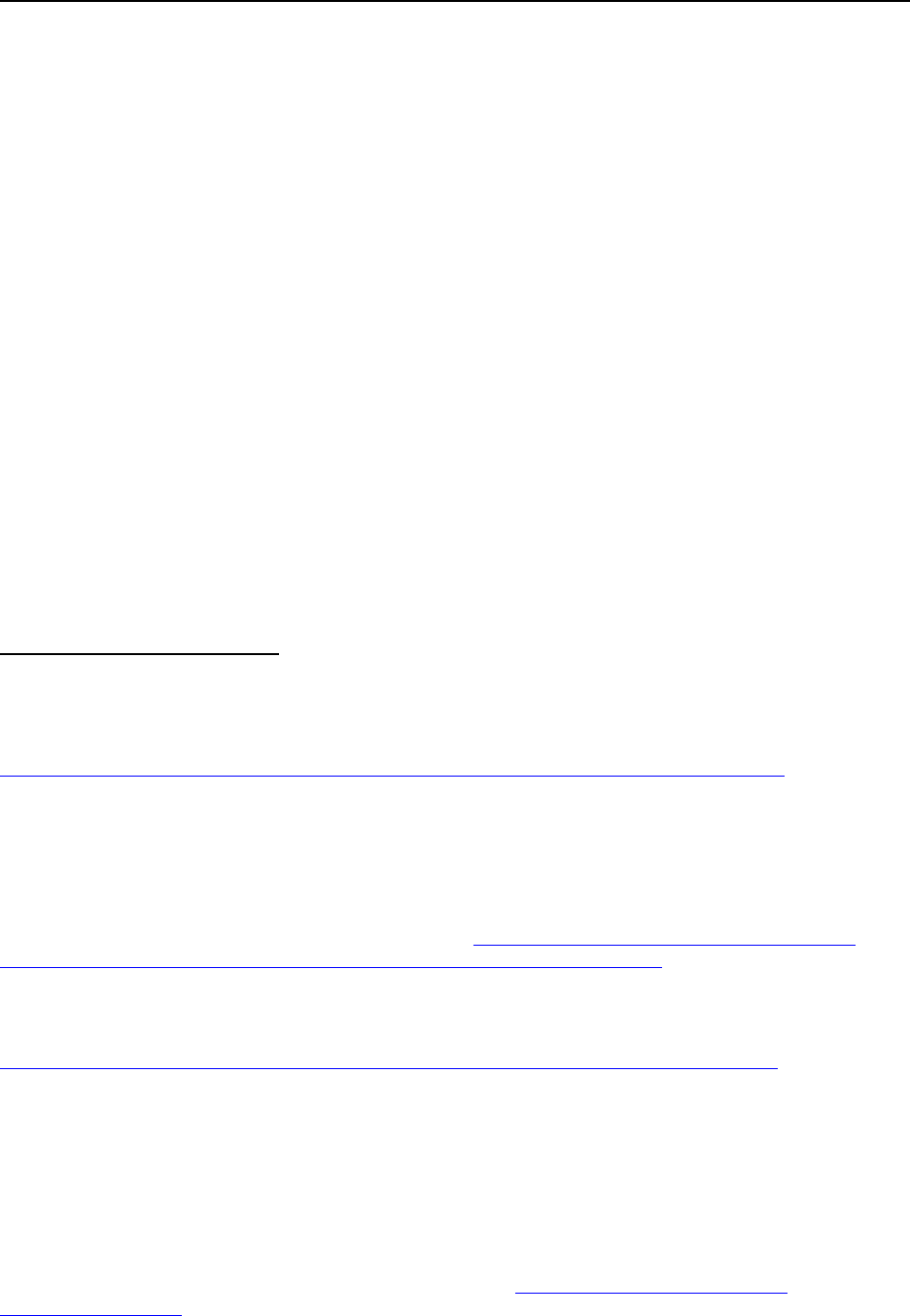
Federal Communications Commission FCC 23-21
36
business concern” is one which: (1) is independently owned and operated; (2) is not dominant in its field
of operation; and (3) satisfies any additional criteria established by the SBA.
7
7. Small Businesses, Small Organizations, Small Governmental Jurisdictions. Our actions,
over time, may affect small entities that are not easily categorized at present. We therefore describe, at
the outset, three broad groups of small entities that could be directly affected herein.
8
First, while there
are industry specific size standards for small businesses that are used in the regulatory flexibility analysis,
according to data from the Small Business Administration’s (SBA) Office of Advocacy, in general a
small business is an independent business having fewer than 500 employees.
9
These types of small
businesses represent 99.9% of all businesses in the United States, which translates to 32.5 million
businesses.
10
8. Next, the type of small entity described as a “small organization” is generally “any not-
for-profit enterprise which is independently owned and operated and is not dominant in its field.”
11
The
Internal Revenue Service (IRS) uses a revenue benchmark of $50,000 or less to delineate its annual
electronic filing requirements for small exempt organizations.
12
Nationwide, for tax year 2020, there
were approximately 447,689 small exempt organizations in the U.S. reporting revenues of $50,000 or less
according to the registration and tax data for exempt organizations available from the IRS.
13
9. Finally, the small entity described as a “small governmental jurisdiction” is defined
generally as “governments of cities, counties, towns, townships, villages, school districts, or special
districts, with a population of less than fifty thousand.”
14
U.S. Census Bureau data from the 2017 Census
of Governments
15
indicate there were 90,075 local governmental jurisdictions consisting of general
7
15 U.S.C. § 632.
8
See 5 U.S.C. § 601(3)-(6).
9
See SBA, Office of Advocacy, Frequently Asked Questions, “What is a small business?,”
https://cdn.advocacy.sba.gov/wp-content/uploads/2021/11/03093005/Small-Business-FAQ-2021.pdf (Nov 2021).
10
Id.
11
See 5 U.S.C. § 601(4).
12
The IRS benchmark is similar to the population of less than 50,000 benchmark in 5 U.S.C § 601(5) that is used to
define a small governmental jurisdiction. Therefore, the IRS benchmark has been used to estimate the number small
organizations in this small entity description. See Annual Electronic Filing Requirement for Small Exempt
Organizations – Form 990-N (e-Postcard), “Who must file,” https://www.irs.gov/charities-non-profits/annual-
electronic-filing-requirement-for-small-exempt-organizations-form-990-n-e-postcard. We note that the IRS data
does not provide information on whether a small exempt organization is independently owned and operated or
dominant in its field.
13
See Exempt Organizations Business Master File Extract (EO BMF), “CSV Files by Region,”
https://www.irs.gov/charities-non-profits/exempt-organizations-business-master-file-extract-eo-bmf. The IRS
Exempt Organization Business Master File (EO BMF) Extract provides information on all registered tax-
exempt/non-profit organizations. The data utilized for purposes of this description was extracted from the IRS EO
BMF data for businesses for the tax year 2020 with revenue less than or equal to $50,000 for Region 1-Northeast
Area (58,577), Region 2-Mid-Atlantic and Great Lakes Areas (175,272), and Region 3-Gulf Coast and Pacific Coast
Areas (213,840) that includes the continental U.S., Alaska, and Hawaii. This data does not include information for
Puerto Rico.
14
See 5 U.S.C. § 601(5).
15
See 13 U.S.C. § 161. The Census of Governments survey is conducted every five (5) years compiling data for
years ending with “2” and “7”. See also Census of Governments, https://www.census.gov/programs-
surveys/cog/about.html.
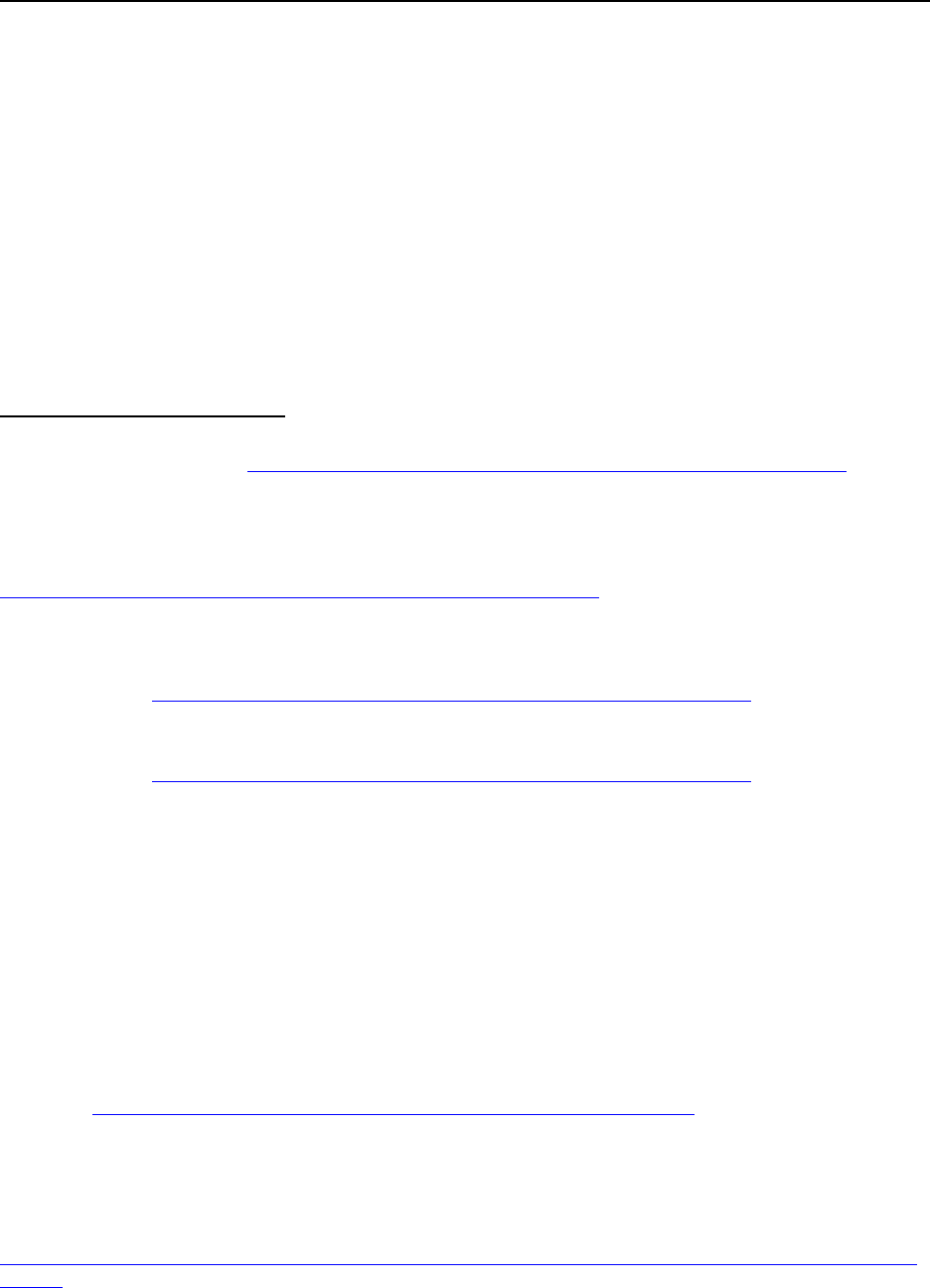
Federal Communications Commission FCC 23-21
37
purpose governments and special purpose governments in the United States.
16
Of this number, there were
36,931 general purpose governments (county,
17
municipal, and town or township
18
) with populations of
less than 50,000 and 12,040 special purpose governments—independent school districts
19
with enrollment
populations of less than 50,000.
20
Accordingly, based on the 2017 U.S. Census of Governments data, we
estimate that at least 48,971 entities fall into the category of “small governmental jurisdictions.”
21
10. Wireless Telecommunications Carriers (except Satellite). This industry comprises
establishments engaged in operating and maintaining switching and transmission facilities to provide
communications via the airwaves.
22
Establishments in this industry have spectrum licenses and provide
services using that spectrum, such as cellular services, paging services, wireless internet access, and
wireless video services.
23
The SBA size standard for this industry classifies a business as small if it has
1,500 or fewer employees.
24
U.S. Census Bureau data for 2017 show that there were 2,893 firms in this
industry that operated for the entire year.
25
Of that number, 2,837 firms employed fewer than 250
employees.
26
Additionally, based on Commission data in the 2021 Universal Service Monitoring Report,
16
See U.S. Census Bureau, 2017 Census of Governments – Organization Table 2. Local Governments by Type and
State: 2017 [CG1700ORG02], https://www.census.gov/data/tables/2017/econ/gus/2017-governments.html. Local
governmental jurisdictions are made up of general purpose governments (county, municipal and town or township)
and special purpose governments (special districts and independent school districts). See also tbl.2. CG1700ORG02
Table Notes_Local Governments by Type and State_2017.
17
See id. at tbl.5. County Governments by Population-Size Group and State: 2017 [CG1700ORG05],
https://www.census.gov/data/tables/2017/econ/gus/2017-governments.html. There were 2,105 county governments
with populations less than 50,000. This category does not include subcounty (municipal and township)
governments.
18
See id. at tbl.6. Subcounty General-Purpose Governments by Population-Size Group and State: 2017
[CG1700ORG06], https://www.census.gov/data/tables/2017/econ/gus/2017-governments.html. There were 18,729
municipal and 16,097 town and township governments with populations less than 50,000.
19
See id. at tbl.10. Elementary and Secondary School Systems by Enrollment-Size Group and State: 2017
[CG1700ORG10], https://www.census.gov/data/tables/2017/econ/gus/2017-governments.html. There were 12,040
independent school districts with enrollment populations less than 50,000. See also tbl.4. Special-Purpose Local
Governments by State Census Years 1942 to 2017 [CG1700ORG04], CG1700ORG04 Table Notes_Special Purpose
Local Governments by State_Census Years 1942 to 2017.
20
While the special purpose governments category also includes local special district governments, the 2017 Census
of Governments data does not provide data aggregated based on population size for the special purpose governments
category. Therefore, only data from independent school districts is included in the special purpose governments
category.
21
This total is derived from the sum of the number of general purpose governments (county, municipal and town or
township) with populations of less than 50,000 (36,931) and the number of special purpose governments -
independent school districts with enrollment populations of less than 50,000 (12,040), from the 2017 Census of
Governments - Organizations tbls.5, 6 & 10.
22
See U.S. Census Bureau, 2017 NAICS Definition, “517312 Wireless Telecommunications Carriers (except
Satellite),” https://www.census.gov/naics/?input=517312&year=2017&details=517312.
23
Id.
24
See 13 CFR § 121.201, NAICS Code 517312 (as of 10/1/22, NAICS Code 517112).
25
See U.S. Census Bureau, 2017 Economic Census of the United States, Employment Size of Firms for the U.S.:
2017, Table ID: EC1700SIZEEMPFIRM, NAICS Code 517312,
https://data.census.gov/cedsci/table?y=2017&n=517312&tid=ECNSIZE2017.EC1700SIZEEMPFIRM&hidePrevie
w=false.
26
Id. The available U.S. Census Bureau data does not provide a more precise estimate of the number of firms that
meet the SBA size standard.
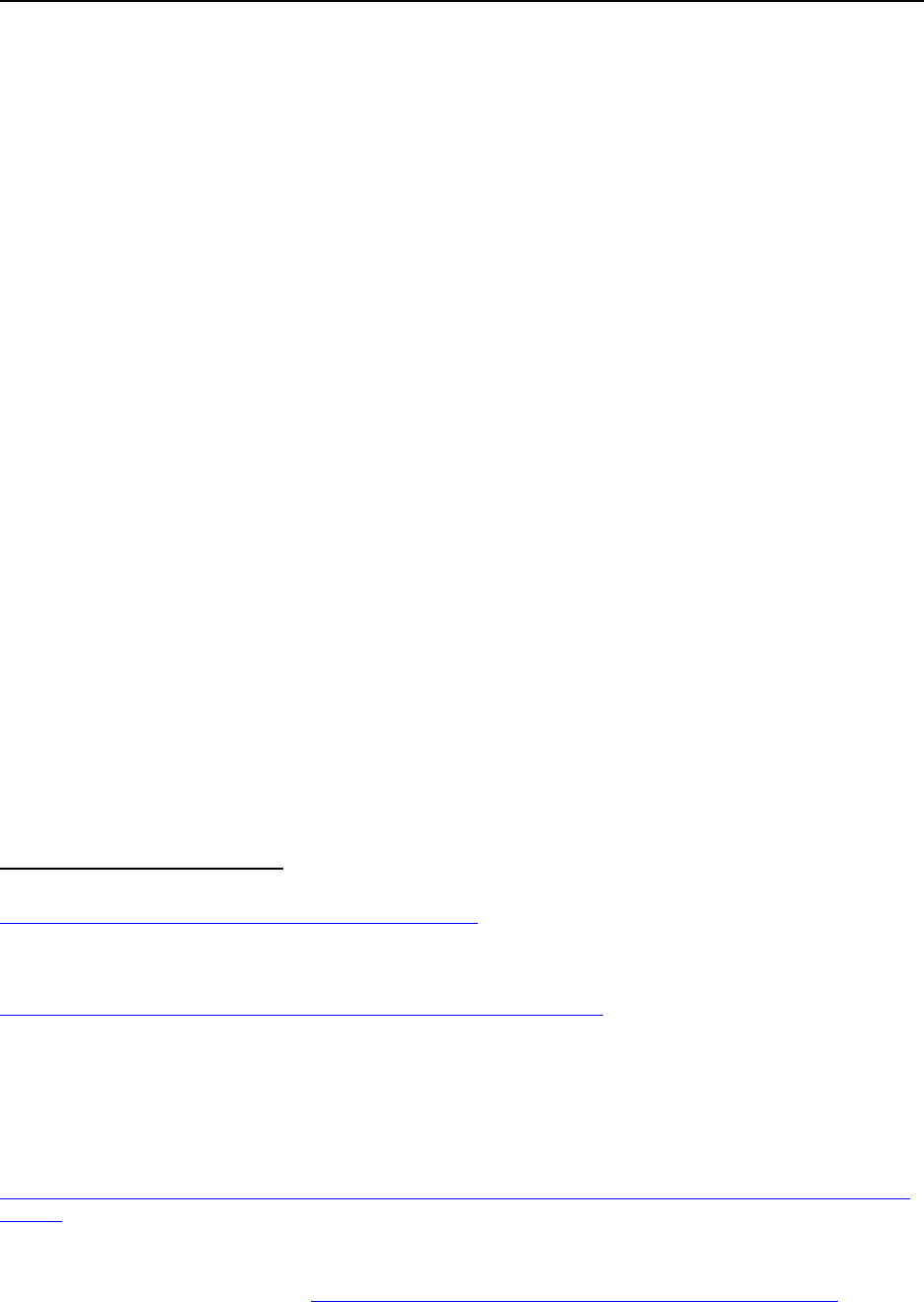
Federal Communications Commission FCC 23-21
38
as of December 31, 2020, there were 797 providers that reported they were engaged in the provision of
wireless services.
27
Of these providers, the Commission estimates that 715 providers have 1,500 or fewer
employees.
28
Consequently, using the SBA’s small business size standard, most of these providers can be
considered small entities.
11. All Other Telecommunications. This industry is comprised of establishments primarily
engaged in providing specialized telecommunications services, such as satellite tracking, communications
telemetry, and radar station operation.
29
This industry also includes establishments primarily engaged in
providing satellite terminal stations and associated facilities connected with one or more terrestrial
systems and capable of transmitting telecommunications to, and receiving telecommunications from,
satellite systems.
30
Providers of Internet services (e.g. dial-up ISPs) or voice over Internet protocol
(VoIP) services, via client-supplied telecommunications connections are also included in this industry.
31
The SBA small business size standard for this industry classifies firms with annual receipts of $35 million
or less as small.
32
U.S. Census Bureau data for 2017 show that there were 1,079 firms in this industry that
operated for the entire year.
33
Of those firms, 1,039 had revenue of less than $25 million.
34
Based on this
data, the Commission estimates that the majority of “All Other Telecommunications” firms can be
considered small.
E. Description of Projected Reporting, Recordkeeping and Other Compliance
Requirements for Small Entities
12. This Order may include new or modified information collection requirements. The
Order adopts a requirement that mobile wireless providers block texts purporting to be from NANP
numbers on a reasonable DNO list, which include numbers that purport to be from invalid, unallocated, or
unused numbers, and NANP numbers for which the subscriber to the number has requested that texts
purporting to originate from that number be blocked. In addition, the Order requires providers to
establish a point of contact for senders to resolve issues of erroneously blocked texts. To the extent these
new requirements constitute an information collection, such collection will not present a substantial
burden for small business concerns with fewer than 25 employees; any such burdens would be far
outweighed by the benefits to consumers from blocking text messages that are highly likely to be illegal.
Steps Taken to Minimize Significant Economic Impact on Small Entities, and Significant Alternatives
Considered
13. The RFA requires an agency to describe any significant alternatives that it has considered
27
Federal-State Joint Board on Universal Service, Universal Service Monitoring Report at 26, Table 1.12 (2021),
https://docs.fcc.gov/public/attachments/DOC-379181A1.pdf.
28
Id.
29
See U.S. Census Bureau, 2017 NAICS Definition, “517919 All Other Telecommunications,”
https://www.census.gov/naics/?input=517919&year=2017&details=517919.
30
Id.
31
Id.
32
See 13 CFR § 121.201, NAICS Code 517919 (as of 10/1/22, NAICS Code 517810).
33
See U.S. Census Bureau, 2017 Economic Census of the United States, Selected Sectors: Sales, Value of Shipments,
or Revenue Size of Firms for the U.S.: 2017, Table ID: EC1700SIZEREVFIRM, NAICS Code 517919,
https://data.census.gov/cedsci/table?y=2017&n=517919&tid=ECNSIZE2017.EC1700SIZEREVFIRM&hidePrevie
w=false.
34
Id. The available U.S. Census Bureau data does not provide a more precise estimate of the number of firms that
meet the SBA size standard. We also note that according to the U.S. Census Bureau glossary, the terms receipts and
revenues are used interchangeably, see https://www.census.gov/glossary/#term_ReceiptsRevenueServices.

Federal Communications Commission FCC 23-21
39
in reaching its approach, which may include the following four alternatives, among others: “(1) the
establishment of differing compliance or reporting requirements or timetables that take into account the
resources available to small entities; (2) the clarification, consolidation, or simplification of compliance
and reporting requirements under the rule for such small entities; (3) the use of performance rather than
design standards; and (4) an exemption from coverage of the rule, or any part thereof, for small entities.”
35
14. The Order requires mobile wireless providers to block texts, at the network level, that
purport to be from numbers on a reasonable Do-Not-Originate
list. Such texts are highly likely to be
illegal and for that reason the Commission is adopting a requirement to block at the network level. The
Commission recognizes that mobile wireless providers, including small entities, already take measures to
block illegal text messages from reaching their customers’ phones and this requirement should not be
burdensome. The Order also requires providers and other entities to establish a point of contact for
texters to report erroneously blocked texts. Because many of these providers and entities maintain a point
of contact for call blocking purposes, and because the Order states that providers and entities may use the
same point of contact for the text blocking requirement, the requirement should not be burdensome.
F. Report to Congress
15. The Commission will send a copy of the Report and Order, including this FRFA, in a
report to be sent to Congress pursuant to the Congressional Review Act.
36
In addition, the Commission
will send a copy of the Report and Order, including this FRFA, to the Chief Counsel for Advocacy of the
SBA. The Order and FRFA (or summaries thereof) will also be published in the Federal Register.
37
35
5 U.S.C. § 603(c)(1)–(c)(4).
36
See 5 U.S.C. § 801(a)(1)(A).
37
See id. § 604(b).

Federal Communications Commission FCC 23-21
40
APPENDIX E
Initial Regulatory Flexibility Analysis
1. As required by the Regulatory Flexibility Act of 1980, as amended
(RFA)
1
the Commission
has prepared this Initial Regulatory Flexibility Analysis (IRFA) of the possible significant economic
impact on a substantial number of small entities by the policies proposed
in this Further Notice of
Proposed Rulemaking (FNPRM). Written public comments are requested on this IRFA. Comments must
be identified as responses to the IRFA and must be filed by the deadlines for comments on the FNPRM
provided on the first page of the FNPRM. The Commission will send a copy of this entire FNPRM,
including this IRFA, to the Chief Counsel for Advocacy of the Small Business Administration (SBA).
2
In
addition, the FNPRM and the IRFA (or summaries thereof) will be published in the Federal Register.
3
A. Need for, and Objectives of, the Proposed Rules
2. The Notice seeks comment on several issues, specifically, (i) whether to require
terminating mobile wireless providers to block text messages when notified by the Commission that they
are likely scams; (ii) text message authentication; (iii) extending Do-Not-Call protections to marketing
text messages; and (iv) banning the practice of obtaining a single consumer consent as justification for
calls and texts from multiple sellers and potential fraudsters.
B. Legal Basis
3. This action, including publication of proposed rules, is authorized under sections 4(i),
4(j), 201(b), 227(e), 254, 257, 301, and 303 of the Communications Act of 1934, as amended, 47 U.S.C.
§§ 154(i), 154(j), 201(b), 227(e), 254, 257, 301, and 303.
C. Description and Estimate of the Number of Small Entities to Which the Proposed
Rules Will Apply
4. The RFA directs agencies to provide a description of and, where feasible, an estimate of
the number of small entities that may be affected by the proposed rules and policies, if adopted.
4
The
RFA generally defines the term “small entity” as having the same meaning as the terms “small business,”
“small organization,” and “small governmental jurisdiction.”
5
In addition, the term “small business” has
the same meaning as the term “small business concern” under the Small Business Act.
6
A “small
business concern” is one which: (1) is independently owned and operated; (2) is not dominant in its field
of operation; and (3) satisfies any additional criteria established by the SBA.
7
5. Small Businesses, Small Organizations, Small Governmental Jurisdictions. Our actions,
over time, may affect small entities that are not easily categorized at present. We therefore describe, at
1
5 U.S.C. § 603. The RFA, see 5 U.S.C. §§ 601-612, was amended by the Small Business Regulatory Enforcement
Fairness Act of 1996 (SBREFA), Pub. L. No. 104-121, Title II, 110 Stat. 857 (1996)
2
5 U.S.C. § 603(a).
3
Id.
4
5 U.S.C. § 603(b)(3).
5
5 U.S.C. § 601(6).
6
5 U.S.C. § 601(3) (incorporating by reference the definition of “small-business concern” in the Small Business
Act, 15 U.S.C. § 632). Pursuant to 5 U.S.C. § 601(3), the statutory definition of a small business applies “unless an
agency, after consultation with the Office of Advocacy of the Small Business Administration and after opportunity
for public comment, establishes one or more definitions of such term which are appropriate to the activities of the
agency and publishes such definition(s) in the Federal Register.”
7
15 U.S.C. § 632.
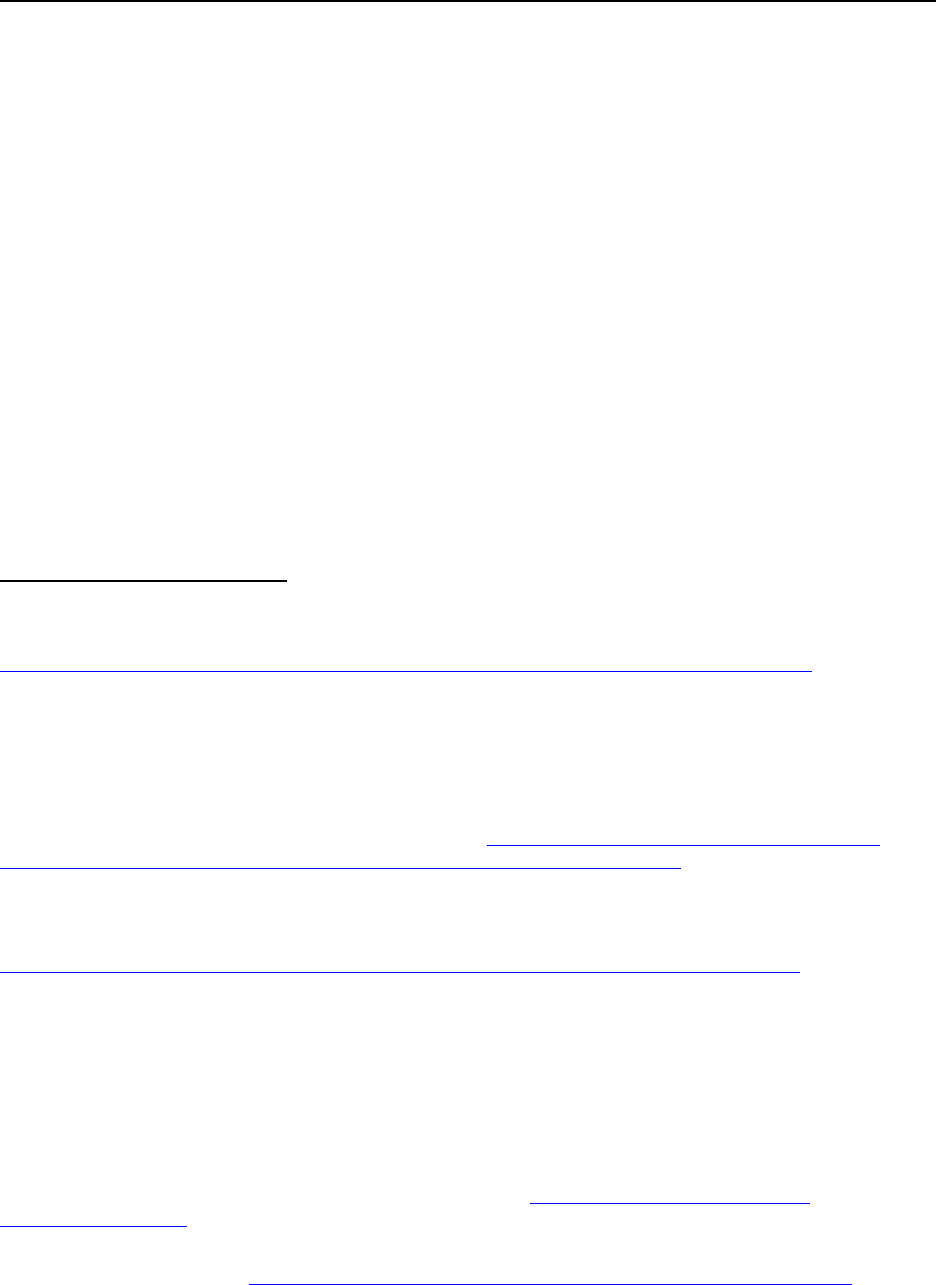
Federal Communications Commission FCC 23-21
41
the outset, three broad groups of small entities that could be directly affected herein.
8
First, while there
are industry specific size standards for small businesses that are used in the regulatory flexibility analysis,
according to data from the Small Business Administration’s (SBA) Office of Advocacy, in general a
small business is an independent business having fewer than 500 employees.
9
These types of small
businesses represent 99.9% of all businesses in the United States, which translates to 32.5 million
businesses.
10
6. Next, the type of small entity described as a “small organization” is generally “any not-
for-profit enterprise which is independently owned and operated and is not dominant in its field.”
11
The
Internal Revenue Service (IRS) uses a revenue benchmark of $50,000 or less to delineate its annual
electronic filing requirements for small exempt organizations.
12
Nationwide, for tax year 2020, there
were approximately 447,689 small exempt organizations in the U.S. reporting revenues of $50,000 or less
according to the registration and tax data for exempt organizations available from the IRS.
13
7. Finally, the small entity described as a “small governmental jurisdiction” is defined
generally as “governments of cities, counties, towns, townships, villages, school districts, or special
districts, with a population of less than fifty thousand.”
14
U.S. Census Bureau data from the 2017 Census
of Governments
15
indicate there were 90,075 local governmental jurisdictions consisting of general
purpose governments and special purpose governments in the United States.
16
Of this number, there were
8
See 5 U.S.C. § 601(3)-(6).
9
See SBA, Office of Advocacy, Frequently Asked Questions, “What is a small business?,”
https://cdn.advocacy.sba.gov/wp-content/uploads/2021/11/03093005/Small-Business-FAQ-2021.pdf. (Nov 2021).
10
Id.
11
See 5 U.S.C. § 601(4).
12
The IRS benchmark is similar to the population of less than 50,000 benchmark in 5 U.S.C § 601(5) that is used to
define a small governmental jurisdiction. Therefore, the IRS benchmark has been used to estimate the number small
organizations in this small entity description. See Annual Electronic Filing Requirement for Small Exempt
Organizations – Form 990-N (e-Postcard), “Who must file,” https://www.irs.gov/charities-non-profits/annual-
electronic-filing-requirement-for-small-exempt-organizations-form-990-n-e-postcard. We note that the IRS data
does not provide information on whether a small exempt organization is independently owned and operated or
dominant in its field.
13
See Exempt Organizations Business Master File Extract (EO BMF), “CSV Files by Region,”
https://www.irs.gov/charities-non-profits/exempt-organizations-business-master-file-extract-eo-bmf. The IRS
Exempt Organization Business Master File (EO BMF) Extract provides information on all registered tax-
exempt/non-profit organizations. The data utilized for purposes of this description was extracted from the IRS EO
BMF data for businesses for the tax year 2020 with revenue less than or equal to $50,000 for Region 1-Northeast
Area (58,577), Region 2-Mid-Atlantic and Great Lakes Areas (175,272), and Region 3-Gulf Coast and Pacific Coast
Areas (213,840) that includes the continental U.S., Alaska, and Hawaii. This data does not include information for
Puerto Rico.
14
See 5 U.S.C. § 601(5).
15
See 13 U.S.C. § 161. The Census of Governments survey is conducted every five (5) years compiling data for
years ending with “2” and “7”. See also Census of Governments, https://www.census.gov/programs-
surveys/cog/about.html.
16
See U.S. Census Bureau, 2017 Census of Governments – Organization Table 2. Local Governments by Type and
State: 2017 [CG1700ORG02], https://www.census.gov/data/tables/2017/econ/gus/2017-governments.html. Local
governmental jurisdictions are made up of general purpose governments (county, municipal and town or township)
and special purpose governments (special districts and independent school districts). See also tbl.2. CG1700ORG02
Table Notes Local Governments by Type and State_2017.
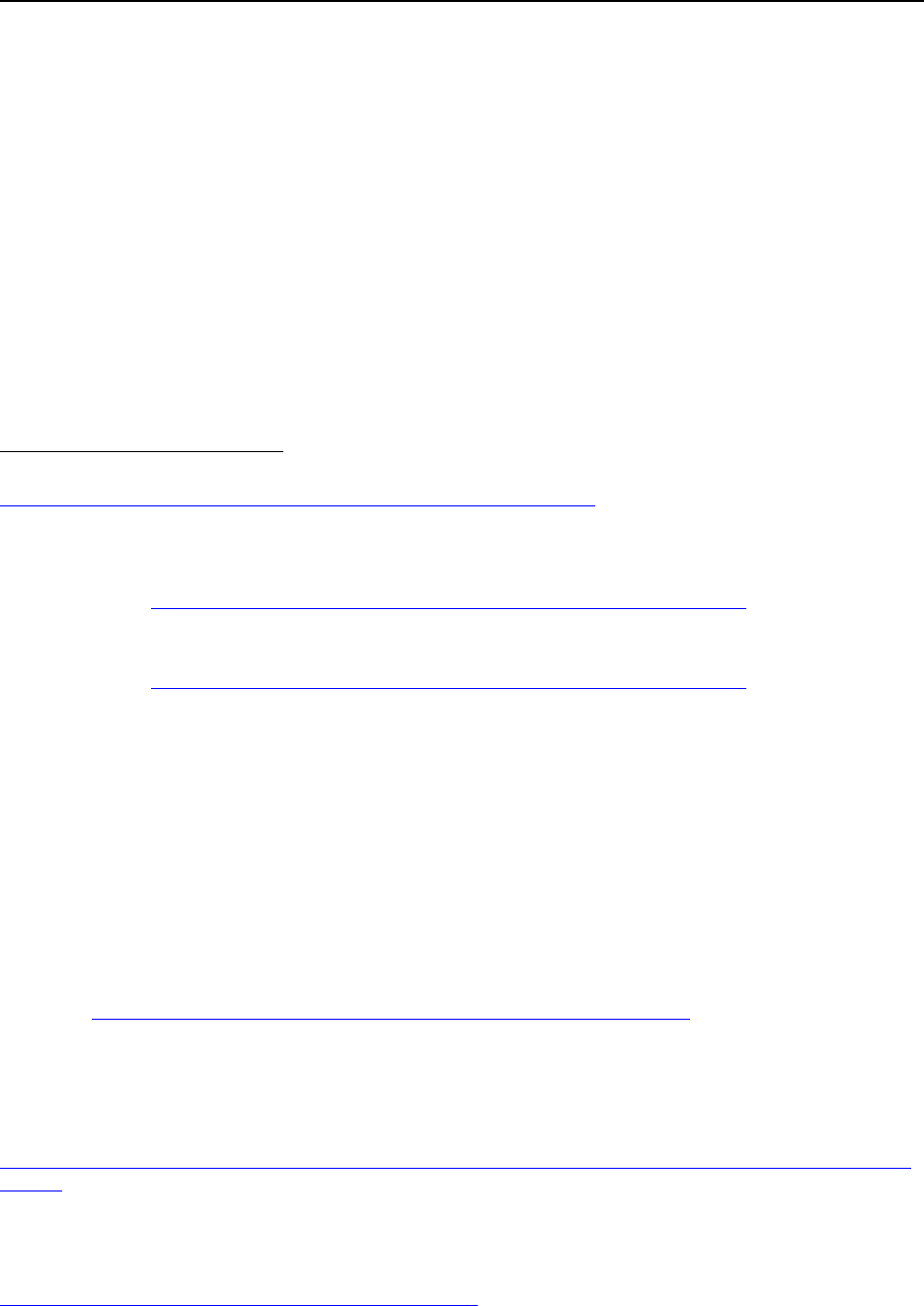
Federal Communications Commission FCC 23-21
42
36,931 general purpose governments (county,
17
municipal, and town or township
18
) with populations of
less than 50,000 and 12,040 special purpose governments—independent school districts
19
with enrollment
populations of less than 50,000.
20
Accordingly, based on the 2017 U.S. Census of Governments data, we
estimate that at least 48,971 entities fall into the category of “small governmental jurisdictions.”
21
8. Wireless Telecommunications Carriers (except Satellite). This industry comprises
establishments engaged in operating and maintaining switching and transmission facilities to provide
communications via the airwaves.
22
Establishments in this industry have spectrum licenses and provide
services using that spectrum, such as cellular services, paging services, wireless internet access, and
wireless video services.
23
The SBA size standard for this industry classifies a business as small if it has
1,500 or fewer employees.
24
U.S. Census Bureau data for 2017 show that there were 2,893 firms in this
industry that operated for the entire year.
25
Of that number, 2,837 firms employed fewer than 250
employees.
26
Additionally, based on Commission data in the 2021 Universal Service Monitoring Report,
as of December 31, 2020, there were 797 providers that reported they were engaged in the provision of
wireless services.
27
Of these providers, the Commission estimates that 715 providers have 1,500 or fewer
employees.
28
Consequently, using the SBA’s small business size standard, most of these providers can be
17
See id. at tbl.5. County Governments by Population-Size Group and State: 2017 [CG1700ORG05],
https://www.census.gov/data/tables/2017/econ/gus/2017-governments.html. There were 2,105 county governments
with populations less than 50,000. This category does not include subcounty (municipal and township)
governments.
18
See id. at tbl.6. Subcounty General-Purpose Governments by Population-Size Group and State: 2017
[CG1700ORG06], https://www.census.gov/data/tables/2017/econ/gus/2017-governments.html. There were 18,729
municipal and 16,097 town and township governments with populations less than 50,000.
19
See id. at tbl.10. Elementary and Secondary School Systems by Enrollment-Size Group and State: 2017
[CG1700ORG10], https://www.census.gov/data/tables/2017/econ/gus/2017-governments.html. There were 12,040
independent school districts with enrollment populations less than 50,000. See also tbl.4. Special-Purpose Local
Governments by State Census Years 1942 to 2017 [CG1700ORG04], CG1700ORG04 Table Notes_Special Purpose
Local Governments by State_Census Years 1942 to 2017.
20
While the special purpose governments category also includes local special district governments, the 2017 Census
of Governments data does not provide data aggregated based on population size for the special purpose governments
category. Therefore, only data from independent school districts is included in the special purpose governments
category.
21
This total is derived from the sum of the number of general purpose governments (county, municipal and town or
township) with populations of less than 50,000 (36,931) and the number of special purpose governments -
independent school districts with enrollment populations of less than 50,000 (12,040), from the 2017 Census of
Governments - Organizations tbls.5, 6 & 10.
22
See U.S. Census Bureau, 2017 NAICS Definition, “517312 Wireless Telecommunications Carriers (except
Satellite),” https://www.census.gov/naics/?input=517312&year=2017&details=517312.
23
Id.
24
See 13 CFR § 121.201, NAICS Code 517312 (as of 10/1/22, NAICS Code 517112).
25
See U.S. Census Bureau, 2017 Economic Census of the United States, Employment Size of Firms for the U.S.:
2017, Table ID: EC1700SIZEEMPFIRM, NAICS Code 517312,
https://data.census.gov/cedsci/table?y=2017&n=517312&tid=ECNSIZE2017.EC1700SIZEEMPFIRM&hidePrevie
w=false.
26
Id. The available U.S. Census Bureau data does not provide a more precise estimate of the number of firms that
meet the SBA size standard.
27
Federal-State Joint Board on Universal Service, Universal Service Monitoring Report at 26, Table 1.12 (2021),
https://docs.fcc.gov/public/attachments/DOC-379181A1.pdf.
28
Id.

Federal Communications Commission FCC 23-21
43
considered small entities.
9. All Other Telecommunications. This industry is comprised of establishments primarily
engaged in providing specialized telecommunications services, such as satellite tracking, communications
telemetry, and radar station operation.
29
This industry also includes establishments primarily engaged in
providing satellite terminal stations and associated facilities connected with one or more terrestrial
systems and capable of transmitting telecommunications to, and receiving telecommunications from,
satellite systems.
30
Providers of Internet services (e.g. dial-up ISPs) or voice over Internet protocol
(VoIP) services, via client-supplied telecommunications connections are also included in this industry.
31
The SBA small business size standard for this industry classifies firms with annual receipts of $35 million
or less as small.
32
U.S. Census Bureau data for 2017 show that there were 1,079 firms in this industry that
operated for the entire year.
33
Of those firms, 1,039 had revenue of less than $25 million.
34
Based on this
data, the Commission estimates that the majority of “All Other Telecommunications” firms can be
considered small.
D. Description of Projected Reporting, Recordkeeping, and Other Compliance
Requirements for Small Entities
10. This Notice may include a change to the Commission’s current information collection,
reporting, recordkeeping, or compliance requirements.
E. Steps Taken to Minimize Significant Economic Impact on Small Entities, and
Significant Alternatives Considered
11. The RFA requires an agency to describe any significant alternatives that it has considered
in reaching its approach, which may include the following four alternatives, among others: “(1) the
establishment of differing compliance or reporting requirements or timetables that take into account the
resources available to small entities; (2) the clarification, consolidation, or simplification of compliance or
reporting requirements under the rule for such small entities; (3) the use of performance, rather than
design, standards; and (4) and exemption from coverage of the rule, or any part thereof, for such small
entities.”
12. The Notice seeks comment on (i) whether to require terminating mobile wireless
providers to block text messages when notified by the Commission that they are likely scams; (ii) text
message authentication; (iii) extending Do-Not-Call protections to marketing text messages; and (iv)
banning the practice of obtaining a single consumer consent as justification for calls and texts from
multiple sellers and potential fraudsters.
13. These proposals would probably not be burdensome for small entities. The proposal to
require those seeking consent from consumers to a list of entities, to clearly and conspicuously display the
29
See U.S. Census Bureau, 2017 NAICS Definition, “517919 All Other Telecommunications,”
https://www.census.gov/naics/?input=517919&year=2017&details=517919.
30
Id.
31
Id.
32
See 13 CFR § 121.201, NAICS Code 517919 (as of 10/1/22, NAICS Code 517810).
33
See U.S. Census Bureau, 2017 Economic Census of the United States, Selected Sectors: Sales, Value of Shipments,
or Revenue Size of Firms for the U.S.: 2017, Table ID: EC1700SIZEREVFIRM, NAICS Code 517919,
https://data.census.gov/cedsci/table?y=2017&n=517919&tid=ECNSIZE2017.EC1700SIZEREVFIRM&hidePrevie
w=false.
34
Id. The available U.S. Census Bureau data does not provide a more precise estimate of the number of firms that
meet the SBA size standard. We also note that according to the U.S. Census Bureau glossary, the terms receipts and
revenues are used interchangeably, see https://www.census.gov/glossary/#term_ReceiptsRevenueServices.

Federal Communications Commission FCC 23-21
44
list where consent is requested would, if adopted, prevent those lead generators or telemarketers from
failing to advise the consumer of the list of entities; instead the list would be displayed where the consent
is requested. This should not be burdensome to small entities, as it merely requires disclosing the list
where consent is requested, instead of in a hyperlink, and should reduce unwanted text messages and calls
to consumers. The proposal to include texts in the DNC rules should not have an impact on small entities.
Wireline and wireless phones are already included and this would just clarify that not only calls to
wireless phones on the DNC list are covered, but text messages, too. The Commission anticipates that
these rules, if adopted, would also reduce unwanted calls and texts to small entities. The proposal to
require service providers to block texts after notice from the Commission of suspected illegality,
including fraud should not be burdensome for small entities. Mobile wireless providers are already
diligent in blocking fraudulent calls and texts to their customers and this would assist them in those
efforts.
F. Federal Rules that May Duplicate, Overlap, or Conflict with the Proposed Rules
14. None.

Federal Communications Commission FCC 23-21
45
STATEMENT OF
CHAIRWOMAN JESSICA ROSENWORCEL
Re: Targeting and Eliminating Unlawful Text Messages, CG Docket No. 21-402; Rules and
Regulations Implementing the Telephone Consumer Protection Act of 1991, CG Docket No. 02-
278; Report and Order and Further Notice of Proposed Rulemaking (March 16, 2023)
More than a century ago, physiologist Ivan Pavlov did a series of experiments with food, buzzers,
and dogs. He was able to train the dogs to associate a buzzing noise with food, so much so that they
began to drool whenever they heard this sound, even if there was no food around.
Sometimes I wonder what Pavlov would think about us and our smartphones. Because most of us
are conditioned to reach for our phones anytime we hear the familiar buzz telling us a text is incoming. In
our defense, those noises have become an effective way to stay connected. They help us keep up with
family and friends and receive timely information from those we trust.
But there are those who want to take advantage of this trust—and our instinct, like the subjects of
Pavlov’s experiment, to assume something needs attention every time we hear our devices buzz. We see
this clearly in the growing number of junk texts showing up on our phones. Scam artists have found that
sending us messages about a package you never ordered or a payment that never went through along with
a link to a shady website is a quick and easy way to get us to engage on our devices and fall prey to fraud.
These robotexts are making a mess of our phones. They are reducing trust in a powerful way to
communicate. So today we take our first step to stop these unwanted texts at the network level. We put
in place rules that require mobile wireless carriers to block texts that come from invalid, unallocated, or
unused numbers. In other words, we require providers to stop the texts that are most likely to be illegal.
This approach has the support of Attorneys General from all 50 states and the District of Columbia. It’s
good stuff. But we are not stopping here. Because we also adopt a rulemaking to explore other way stop
unwanted text messages, including authentication measures and rules to prevent the abuse of consumer
consent.
Thank you to those at the agency who worked on this effort, including Mika Savir, Kim Wild,
James Brown, Zac Champ, Kristi Thornton, Aaron Garza, Mark Stone, and Jerusha Burnett from the
Consumer and Governmental Affairs Bureau; Rakesh Patel, Lisa Zaina, Daniel Stepanicich, Kristi
Thompson, Cait Barbas, Jessica Manuel, and Alexander Hobbs from the Enforcement Bureau; Susanna
Larson, Garnet Hanley, Kari Hicks, and Jennifer Salhus from the Wireless Telecommunications Bureau;
Elizabeth Drogula, Jonathan Lechter, and Connor Ferraro from the Wireline Competition Bureau;
Kenneth Carlberg and David Furth from the Public Safety and Homeland Security Bureau; Joycelyn
James, Cara Grayer and Joy Ragsdale from the Office of Communications Business Opportunities; Emily
Talaga, Kim Makuch, Mark Montano, Michelle Schaefer, Patrick Brogan from the Office of Economics
and Analytics; and Derek Yeo, Bill Richardson, Rick Mallen, and Valerie Hill from the Office of General
Counsel.

Federal Communications Commission FCC 23-21
46
STATEMENT OF
COMMISSIONER GEOFFREY STARKS
Re: Targeting and Eliminating Unlawful Text Messages, CG Docket No. 21-402; Rules and
Regulations Implementing the Telephone Consumer Protection Act of 1991, CG Docket No. 02-
278; Report and Order and Further Notice of Proposed Rulemaking (March 16, 2023)
Texting is increasingly becoming Americans’ preferred way to communicate.
1
But unfortunately,
as we’ve seen before, the more popular a communications service is, the more it’s targeted by spammers
and bad actors. The rise of robotexts – unwanted or illegal text messages – means a similar rise in harm
to consumers, in the form of phishing attacks, malware, and scams. And robotexts are different than
robocalls. Recipients of a robocall have the ability to either pick up the phone or not. But on most
devices, recipients of a robotext see at least some of an unwanted message immediately, exposing them –
and potentially luring them into – harm.
And you know as well as I do that we’ve been getting more of these unwanted texts. In 2022,
Americans received over 225 billion robotexts – a 157 percent year-over-year increase, and a 307 percent
increase from 2020.
2
Last month, February 2023, 10.7 billion spam texts were reported – nearly 39 for
every person in the United States.
3
Given this growth, failure to act could lead to robotexting to become
so pervasive that it negatively affects texting, just as robocalls have done for phone calls. I can
confidently say that’s the last thing we want.
It is time for the Commission to act. We build upon our experience combatting robocalls, and
today move to protect consumers from the threat of illegal or harmful robotexts. Industry has taken
impressive steps on its own, but more needs to be done. The item we adopt today will require providers,
at the network level, to take important steps to stop robotexts before they reach consumers. Adopting
mandatory blocking of texts that are highly likely to be illegal based on a Do-Not-Originate list based on
invalid, unallocated, or unused numbers is a reasonable first step to stem the flow of these texts. At the
same time, we require providers to adopt a single point of contact for texters to report erroneously
blocked messages, to balance the needs of industry and consumers. And finally, we recognize that this is
just the first step, and seek additional comment on further proposals to protect consumers.
I will stay vigilant in pushing the Commission to do all it can to eliminate these illegal and
unwanted text messages going forward, especially at a time where we have seen the expansion of texting
to 988 and as part of NG911. I thank the Commission staff who work on robocall and robotext issues – I
know there are many – for their hard work. I approve.
1
Aaron Weiche, SURVEY: Texting Is The Preferred Way To Communicate, Leadferno,
https://leadferno.com/blog/survey-texting-is-the-preferred-way-to-communicate (last visited Mar. 14, 2023).
2
Robokiller, The Robokiller phone scam report: 2022 insights & analysis, https://www.robokiller.com/robokiller-
2022-phone-scam-report (last visited Mar. 14, 2023).
3
Robokiller, 2023 United States robotext trends, https://www.robokiller.com/spam-text-insights (last visited Mar.
14, 2023).
